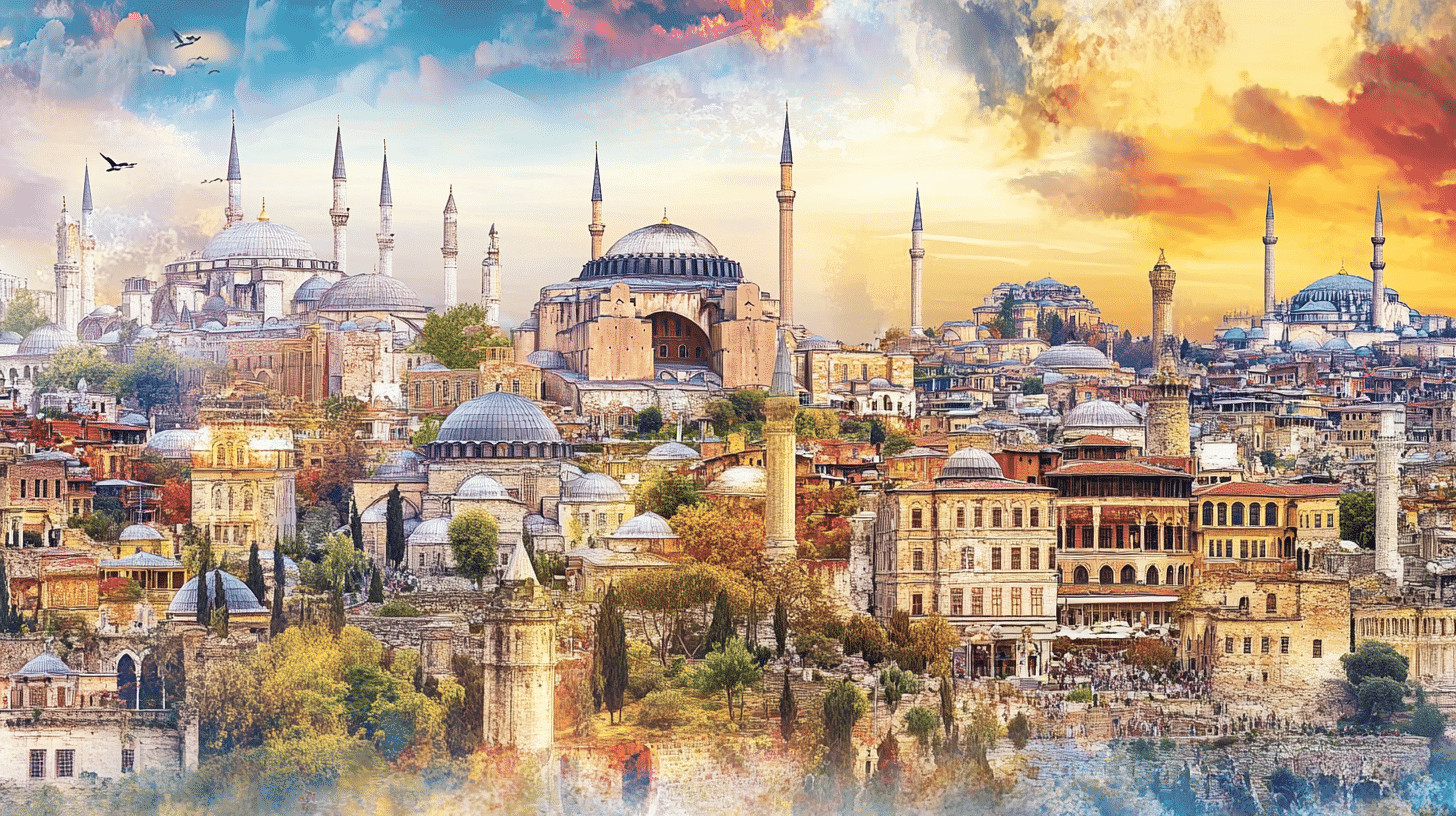31 Famous Turkish Landmarks: Complete Tips and Travel Guide
Welcome to our guide to Turkey’s magnificent landmarks! This land, where Europe meets Asia, holds thousands of years of human history.
From Istanbul’s grand mosques and palaces to ancient Greek and Roman ruins along the coast, Turkey offers something for every traveler.
In this guide, we’ve highlighted must-visit sites across the country and provided practical information to help you plan your visit.
It will be fun for you if you are a traveler or want to experience something good.
Whether you’re drawn to historical buildings, natural wonders, or cultural experiences, Turkey’s rich heritage awaits.
Turkey’s Heritage and History
For thousands of years, Anatolia has been a meeting point of cultures. This land, now Turkey, has seen many civilizations come and go, each leaving its mark.
The Hittites brought iron-working skills around 1600 BCE. Later, Romans built grand cities with theaters and temples.
The Byzantines created beautiful churches and mosaics, with Constantinople as their center.
The Ottomans then ruled for centuries, adding mosques and palaces to the landscape.
Today, Turkey has 19 UNESCO World Heritage Sites, from ancient Troy to the rock formations of Cappadocia.
These places show how many different peoples have called this land home over thousands of years.
Famous Turkish Landmarks to Visit
1.Hagia Sophia (Aya Sofya)- Istanbul
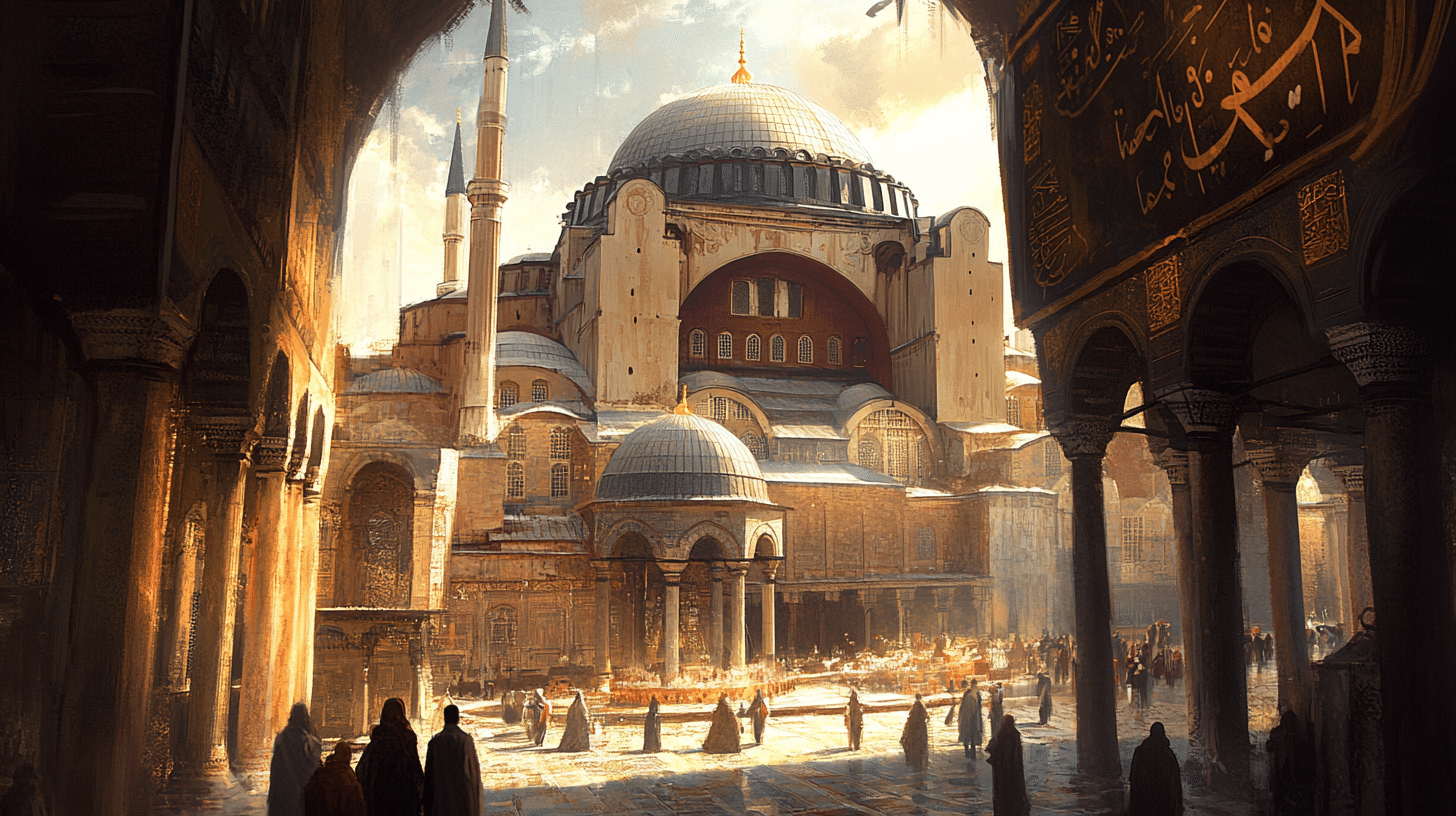
History & Importance: Built in 537 CE as a cathedral, it was later a mosque, then a museum, and now a mosque again. Its massive dome and blend of Christian mosaics with Islamic elements show Turkey’s complex cultural heritage.
Best Time to Visit: April-May and September-October for mild weather and fewer crowds.
Guided Tours: Historical walking tours explain the building’s complex history. Morning tours are often less crowded.
Entry Fees and Hours: Free entry. Closed to tourists during prayer times. Open 9 am-7 pm daily except during religious holidays.
2.Topkapi Palace- Istanbul

History & Importance: The complex was home to Ottoman sultans for 400 years. It includes royal apartments, kitchens, the treasury, and the harem, which show how the empire was run and how royalty lived.
Best Time to Visit: Early spring or fall for pleasant temperatures and good light for photos.
Guided Tours: Palace tours often include skip-the-line access and stories about palace life and political intrigue.
Entry Fees and Hours: Basic entry is 750 TL, plus extra for the Harem. The museum is open 9 am-6 pm, but it is closed on Tuesdays.
3. Sultanahmet Mosque (Blue Mosque)- Istanbul
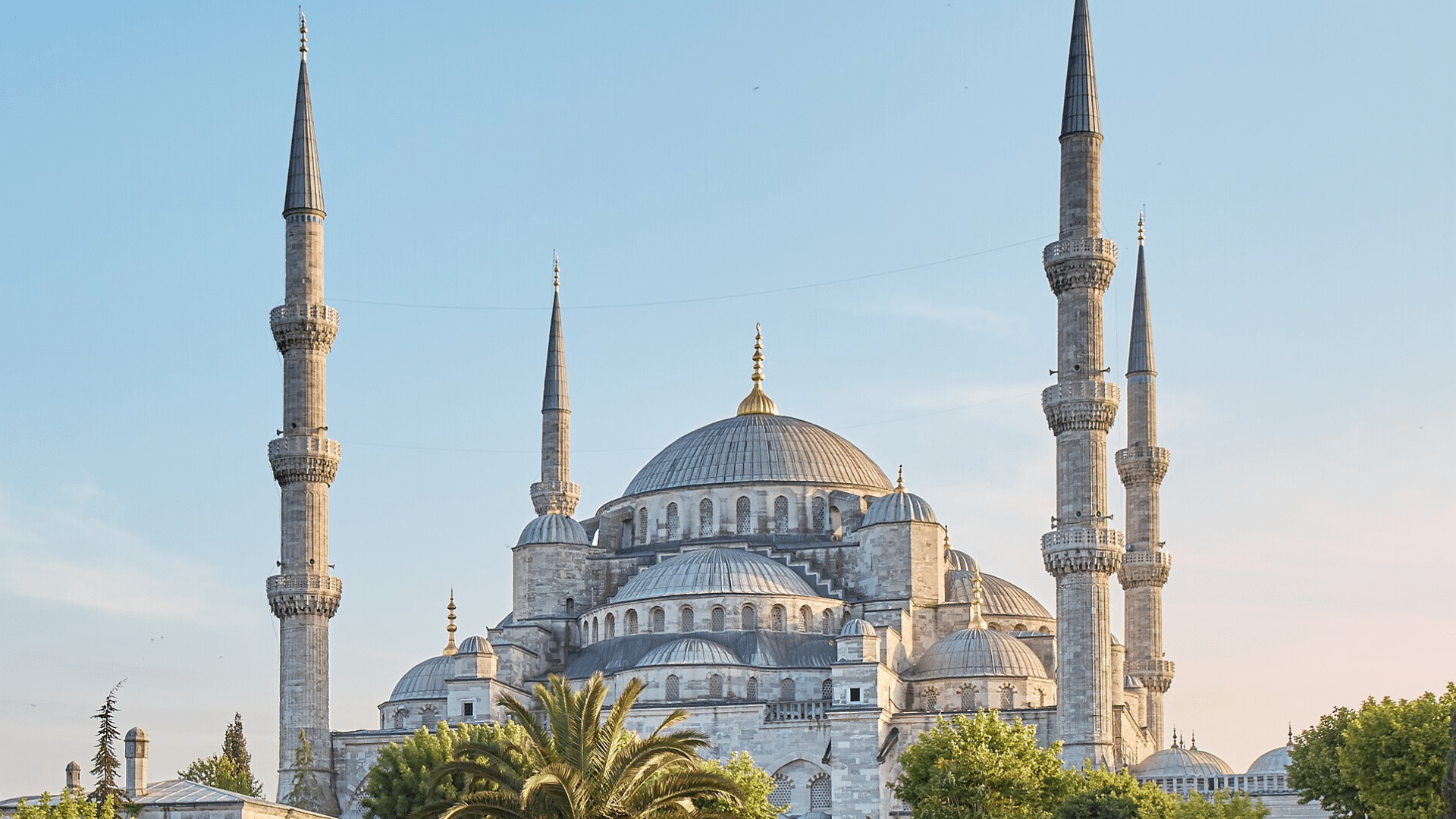
History & Importance: Built in 1616, known for its blue tiles and six minarets. This imperial mosque showcases Ottoman skill in creating grand yet balanced sacred spaces.
The Best Time to Visit: In mid-morning or late afternoon outside prayer times. Ramadan offers a special atmosphere but more crowds.
Guided Tours: Islamic art tours point out the mosque’s design features and explain religious customs.
Entry Fees and Hours: Free. Closed to tourists during five daily prayer times. Women need head scarves (available to borrow).
4. Ephesus- Izmir
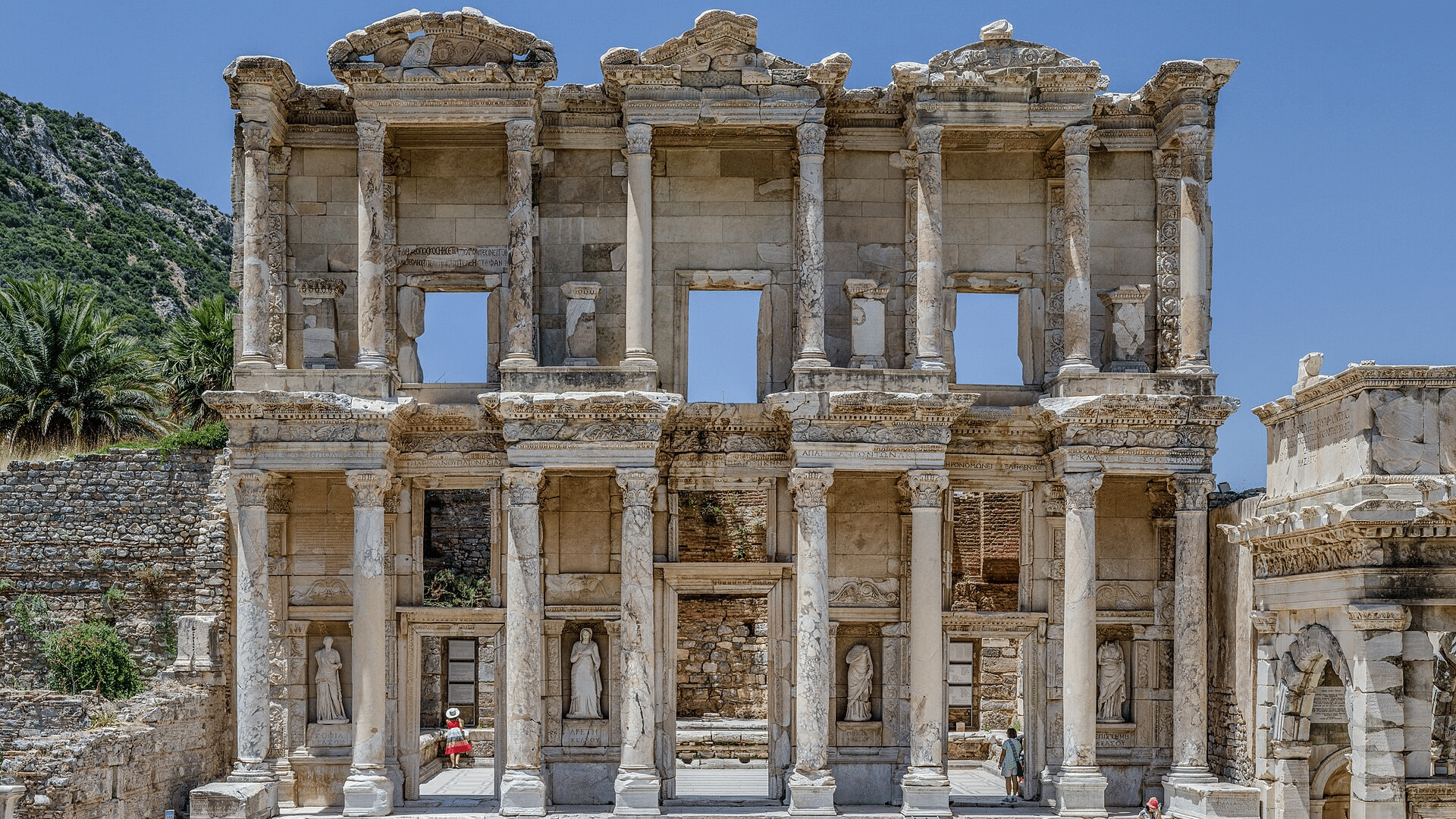
History & Importance: This is an Ancient Greco-Roman city with remarkably intact streets, a library, a theater, and homes. It shows daily life in a major Roman-era port city.
The Best Time to Visit is April, May, or October when there are mild temperatures. Visit early in the morning to avoid crowds and heat.
Guided Tours: Archaeological tours help bring ruins to life. Some tours include Terrace Houses (extra fee but worth it).
Entry Fees and Hours: 900 TL main site, extra for Terrace Houses. Open 8 am-7 pm (summer), 8 am-5 pm (winter).
5. Cappadocia-Nevsehir
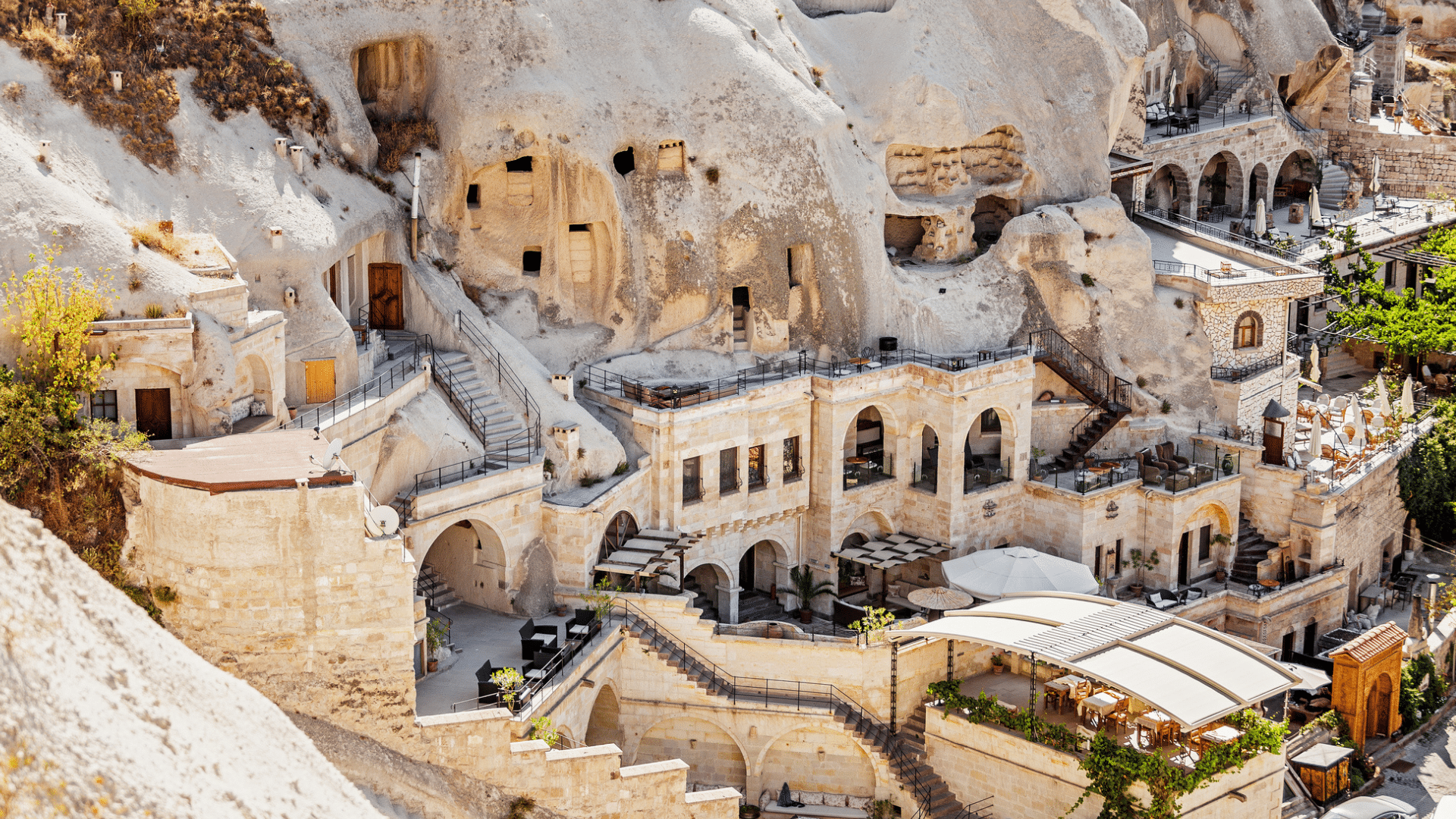
History & Importance: This region has unique rock formations, underground cities, and cave churches. Early Christians hid here, creating hidden communities with beautiful art.
Best Time to Visit: April-June and September-October. Winter offers snow-covered landscapes but cold temperatures.
Guided Tours: Hot air balloon rides offer amazing views at sunrise. Red, Green, and Blue tours cover different areas of the region.
Entry Fees and Hours: Göreme Open Air Museum- 650 TL. Most sites open 8 am-5 pm.
6. Pamukkale-Denizli
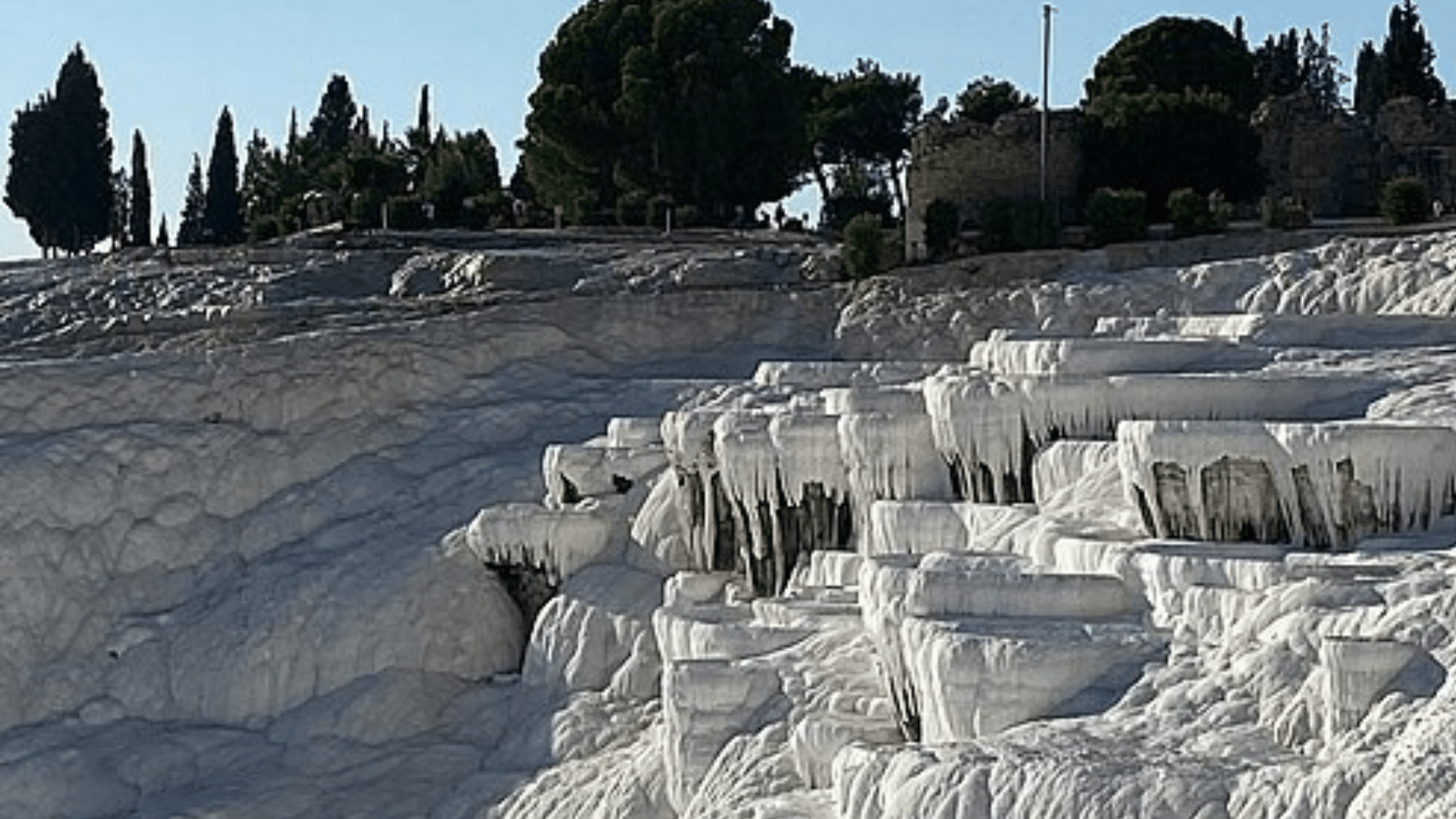
History & Importance: Natural white calcium travertines that create terraced pools alongside ancient Hierapolis city. Romans built this spa town to use the healing waters.
Best Time to Visit: March-May or September-November to avoid summer heat and crowds.
Guided Tours: Combined tours of travertines and Hierapolis explain both natural formation and ancient history.
Entry Fees and Hours: 650 TL for both travertines and Hierapolis. Open 6-30 am-9 pm in summer, 8 am-5 pm in winter.
7. Sumela Monastery-Trabzon
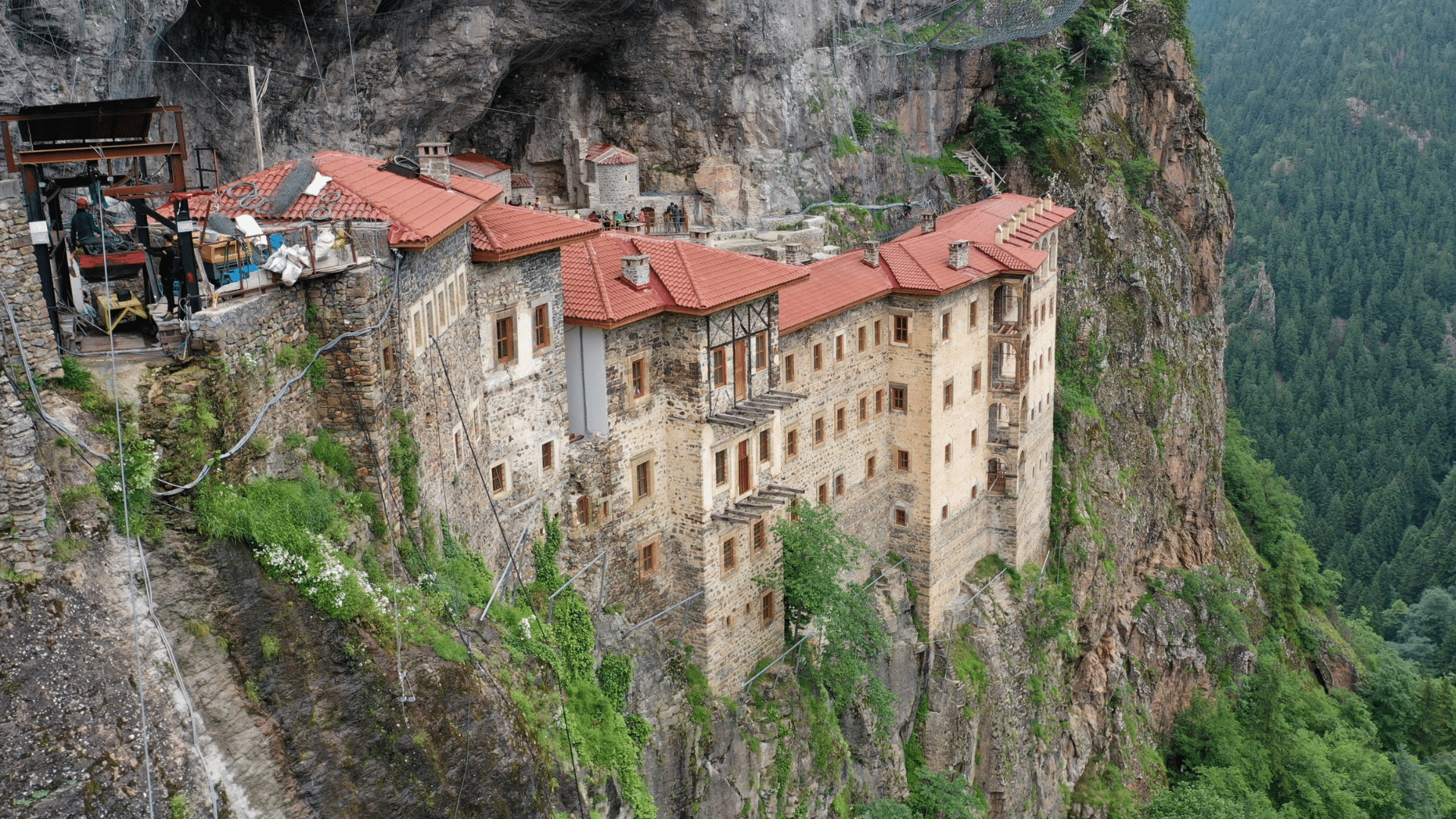
History & Importance: Greek Orthodox monastery built into a cliff face near Trabzon. Ancient frescoes show Byzantine art techniques in a remote mountain setting.
Best Time to Visit: June-September when mountain roads are most accessible.
Guided Tours: Full-day tours from Trabzon often include other Black Sea sites.
Entry Fees and Hours: 10 TL. Open 9 am-7 pm in summer, 9 am-4 pm in winter—closed Mondays.
8. Mount Nemrut-Adiyaman
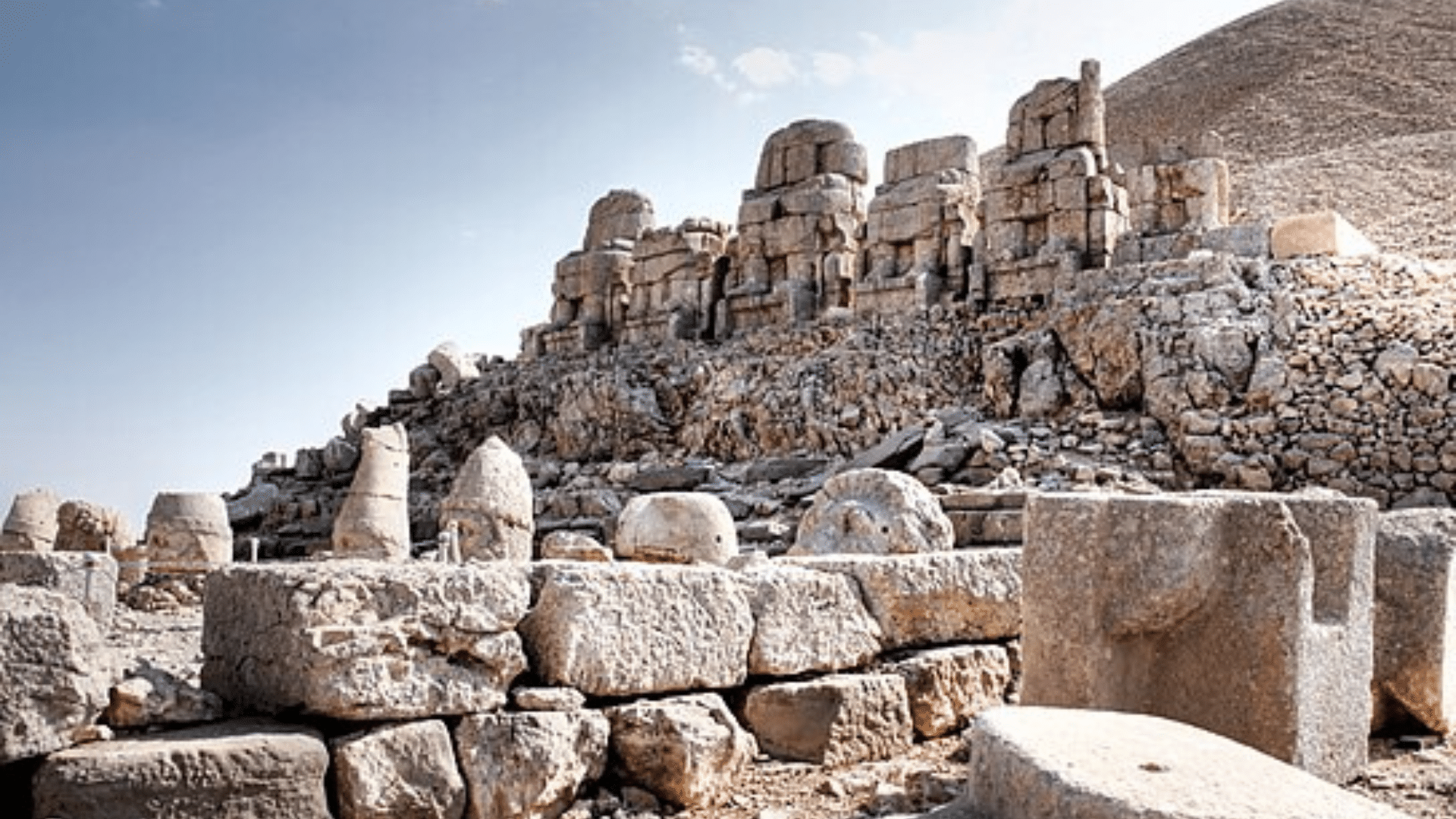
History & Importance: A mountaintop sanctuary with giant statues of gods and King Antiochus I Theos, who mixed Persian, Armenian, and Greek cultures in his kingdom.
Best Time to Visit: May to October. Sunrise and sunset offer the best views and light for photos.
Guided Tours: Sunrise/sunset tours are popular, often with hotel pickup.
Entry Fees and Hours: 150 TL. Open 8 am-8 pm in summer.
9. Troy- Canakkale

History & Importance: The site of the legendary Trojan War has nine layers of ancient cities built one atop another. Bronze Age ruins show early urban planning.
Best Time to Visit: April-May and September-October for mild weather.
Guided Tours: Historical tours explain which ruins belong to which period and connect them to Homer’s stories.
Entry Fees and Hours: 150 TL. Open 8-30 am-6-30 pm (longer in summer).
10. Pergamum (Pergamon)- Izmir

History & Importance: This ancient Greek city is known for its steep theater, medical school, and massive library, which show Hellenistic culture at its peak.
Best Time to Visit: April-May and September-October for mild temperatures.
Guided Tours: Combined tours of the Acropolis and Asklepion (an ancient medical center) show both political and scientific aspects.
Entry Fees and Hours: Entry is free. Timings can vary
11. Ruins of Aphrodisias- Aydin
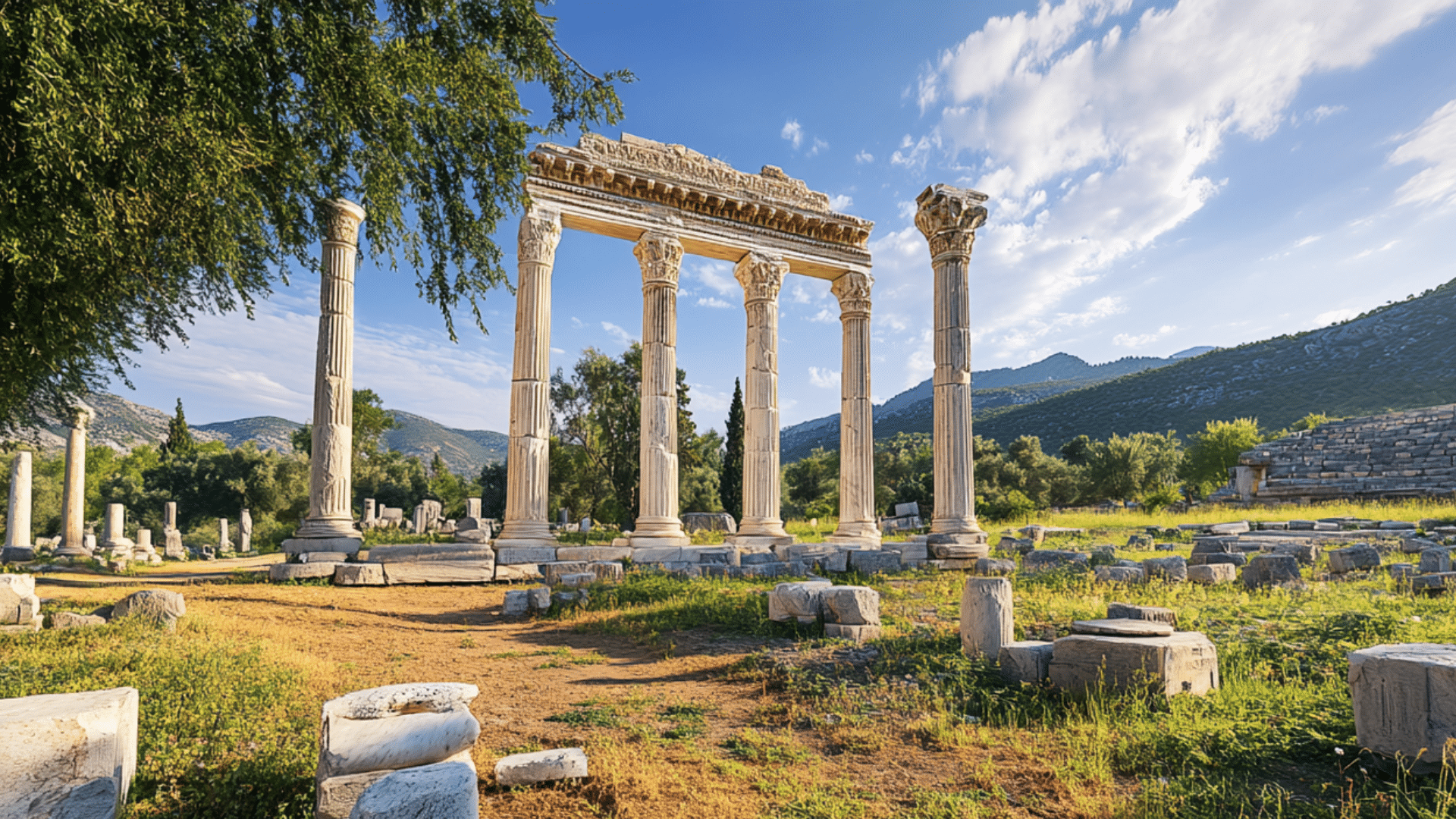
History & Importance: City dedicated to Aphrodite with well-preserved stadium, theater, and sculpture workshop. Famous for marble carving school.
Best Time to Visit: Spring and fall for mild weather and fewer visitors.
Guided Tours: Archaeological tours point out details of sculptures and explain ancient sports at the stadium.
Entry Fees and Hours: 10- 15 TL. Open 8 am-7 pm (summer), 8-30 am-5 pm (winter).
12. Ani- Kars
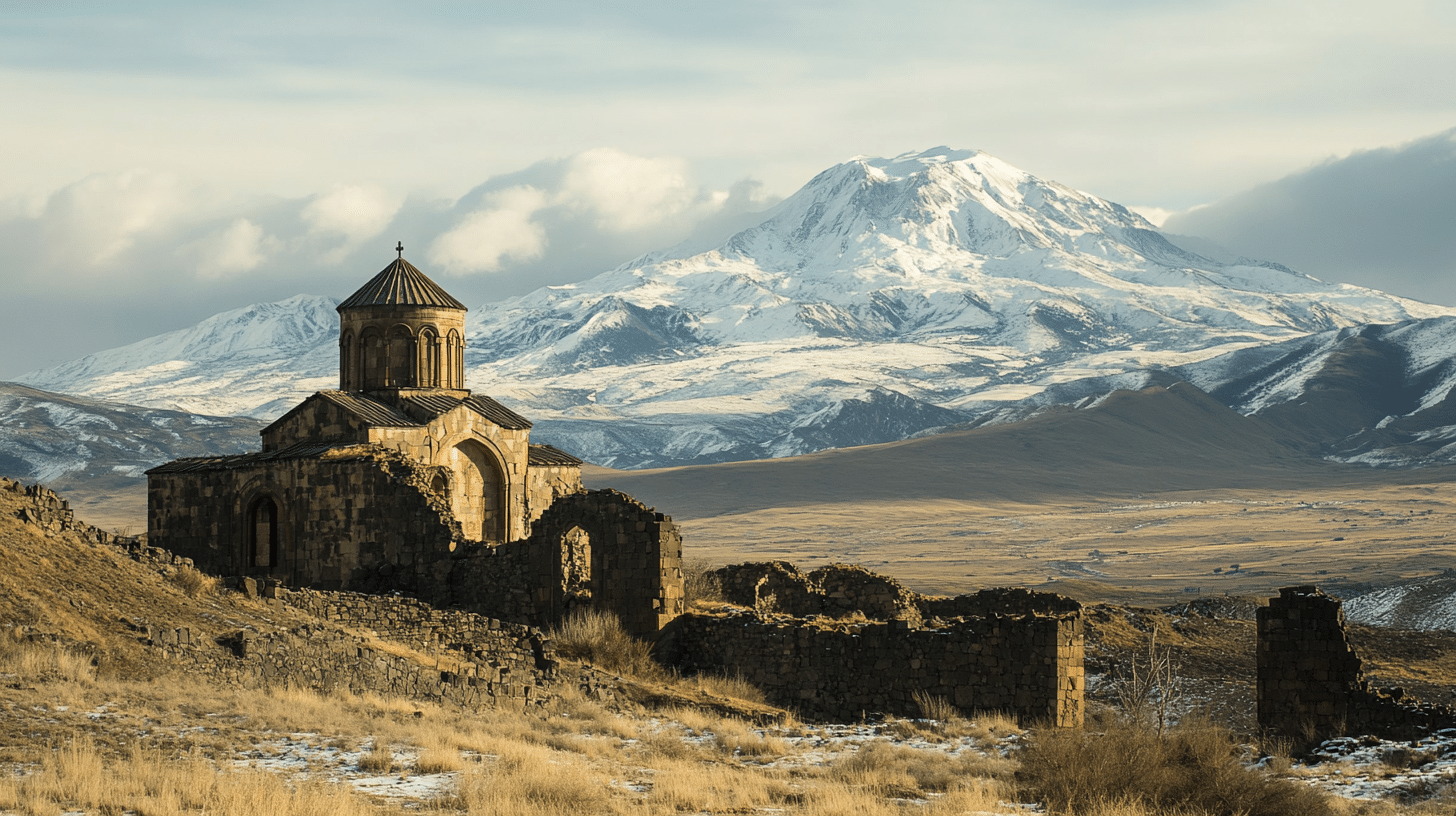
History & Importance: Medieval Armenian ghost city on the Turkish-Armenian border. Churches, mosques, and city walls show the Silk Road trade wealth and a mix of cultures.
Best Time to Visit: June to September when eastern Turkey has milder weather.
Guided Tours: Historical tours explain the city’s rise and fall as part of Armenian and Byzantine history.
Entry Fees and Hours:180 TL. Open 8 am-7 pm in summer, shorter hours in winter.
13. Aspendos Theatre- Antalya
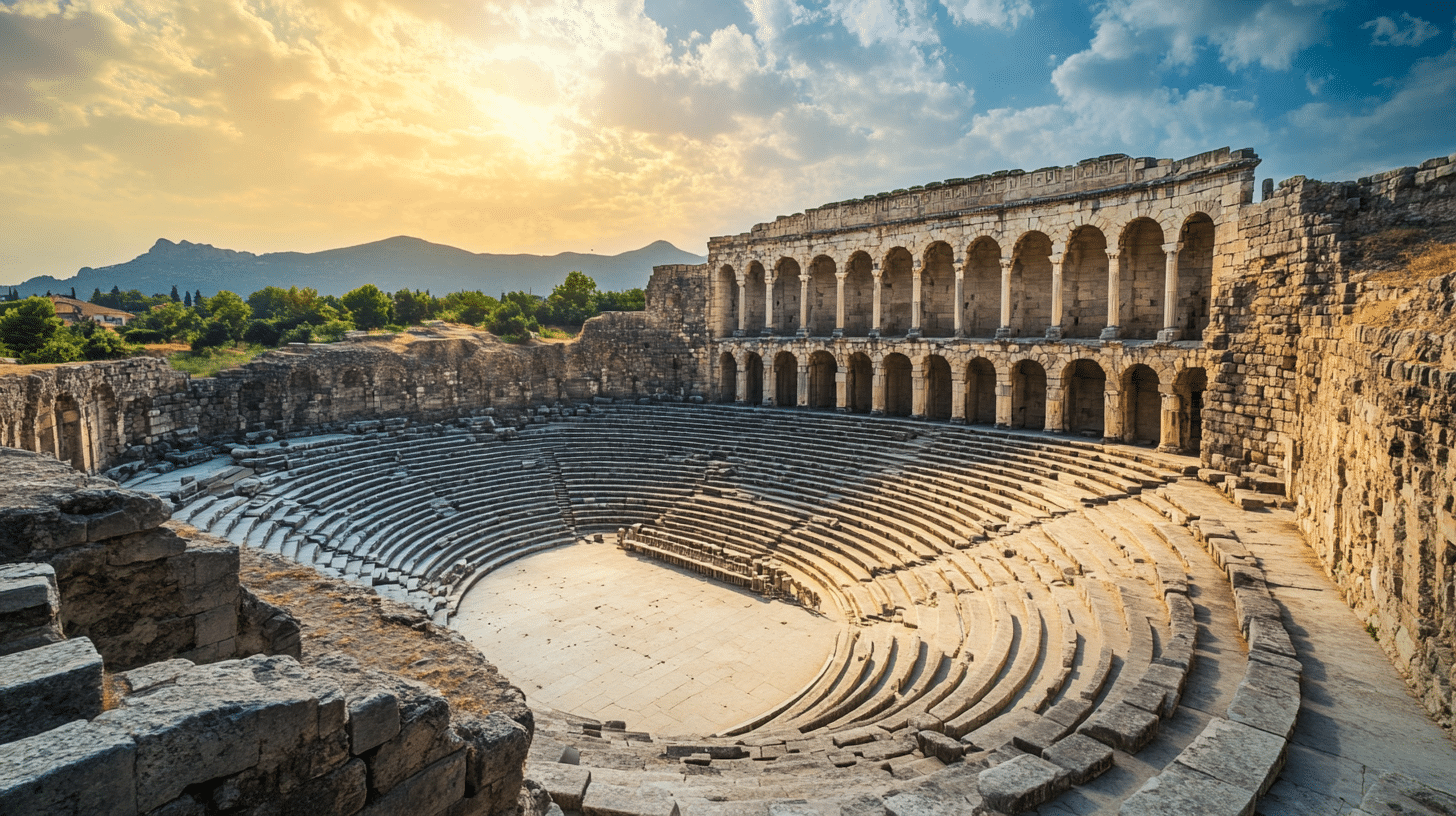
History & Importance: Best-preserved ancient Roman theater with a nearly intact stage building. It is still used today for performances due to excellent acoustics.
Best Time to Visit: May and September-October. Check for summer opera and ballet festivals.
Guided Tours: Architectural tours explain Roman theater design and acoustic principles.
Entry Fees and Hours: 200 TL. Open 9:30 am- 4:30 pm (summer), shorter hours in winter.
14. Bodrum Castle- Bodrum
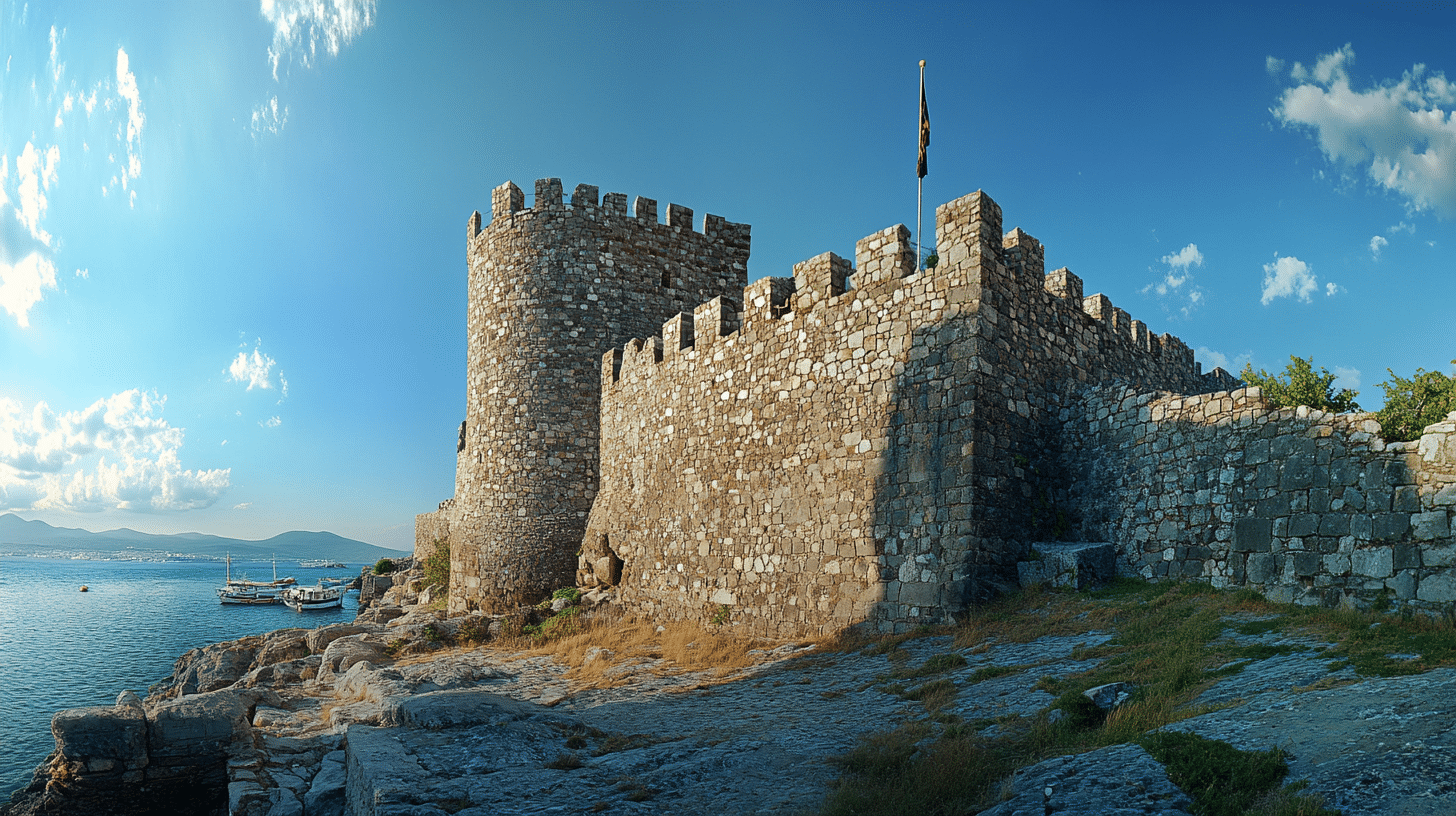
History & Importance: Built by Knights of St. John using stones from the Mausoleum of Halicarnassus. Now houses the Museum of Underwater Archaeology with ancient shipwrecks.
Best Time to Visit: April-May and September-October to avoid summer crowds and heat.
Guided Tours: Museum tours explain ancient maritime trade and shipwreck discoveries.
Entry Fees and Hours: 25 TL. Open 8:30 am 4:30 pm, closed Mondays.
15. Safranbolu- Karabuk
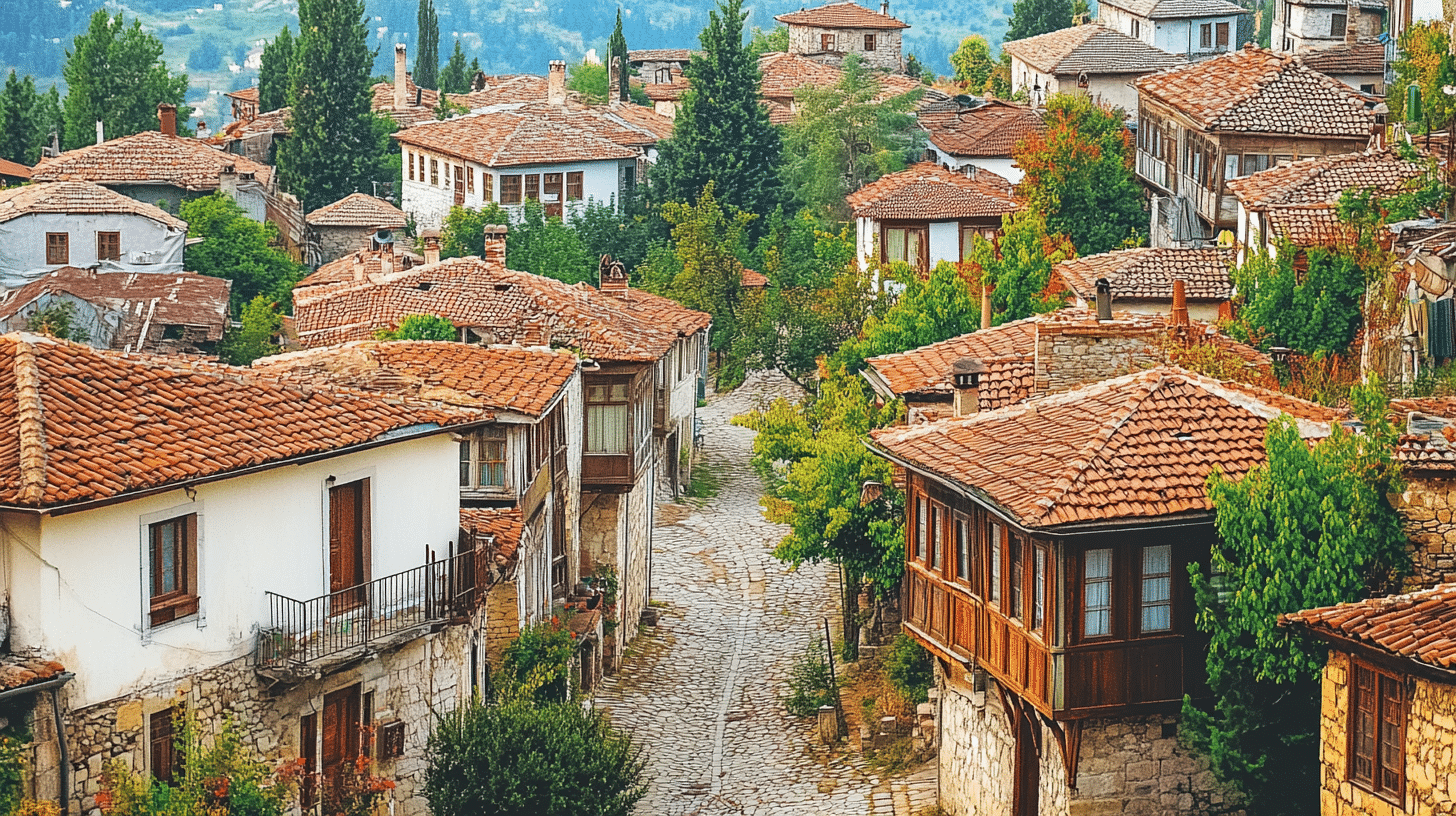
History & Importance: This is an Ottoman trading town with perfectly preserved wooden houses. It shows how wealthy Turkish families lived in the 18th and 19th centuries.
Best Time to Visit: April-June and September-October for pleasant weather.
Guided Tours: Walking tours of the old town explain Ottoman urban planning and daily life.
Entry Fees and Hours: Most houses charge small entry fees (15-30 TL). They are open 9 am-7 pm.
16. Oludeniz (Blue Lagoon)- Mugla
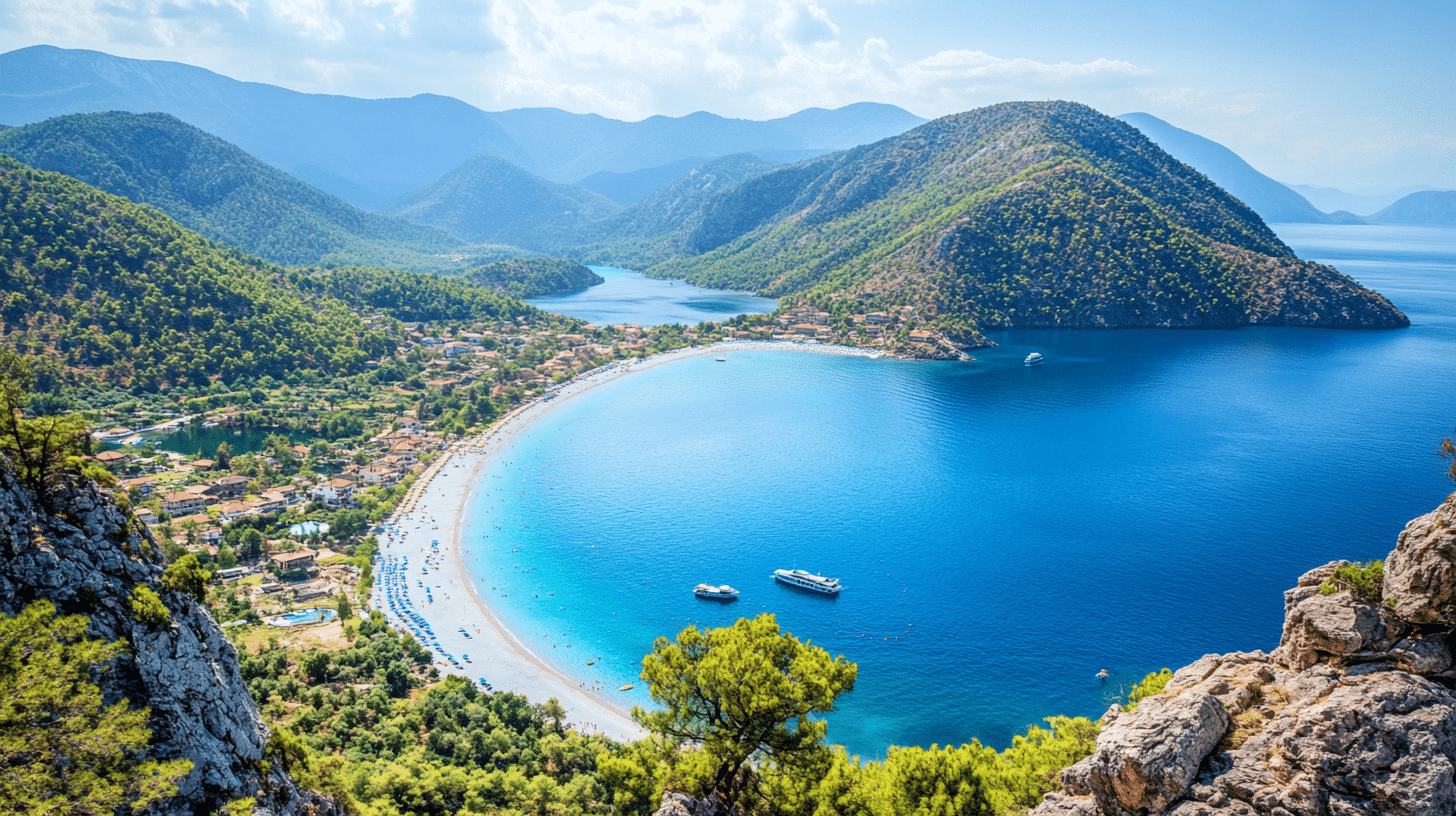
History & Importance: Natural bay with calm turquoise waters and white sand beach. Mountains meet the sea in one of Turkey’s most famous landscapes.
Best Time to Visit: May-June and September-October for swimming without crowds.
Guided Tours: Boat tours visit hidden beaches and nearby islands. Tandem paragliding from Babadağ mountain is popular.
Entry Fees and Hours: The beach is free. Blue Lagoon National Park- 250 TL.
17. Mausoleum of Mevlana Rumi- Istanbul
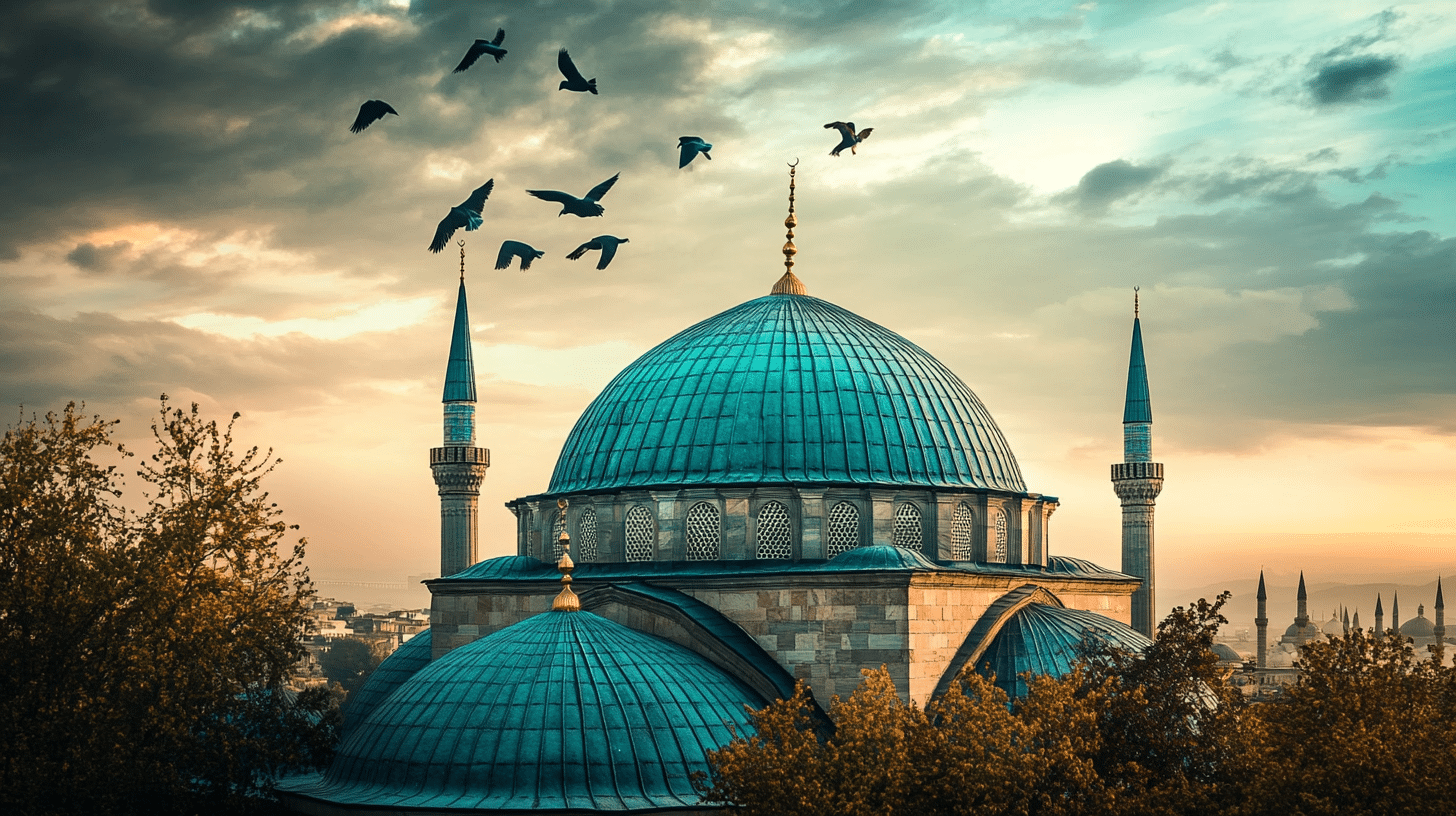
History & Importance: The tomb of the 13th-century Sufi poet and philosopher Rumi is a center for the whirling dervish tradition and Islamic mystical teachings.
Best Time to Visit: December for annual whirling dervish ceremonies marking Rumi’s death.
Guided Tours: Cultural tours explain Sufi traditions and Rumi’s poetry.
Entry Fees and Hours: The entry is free. Open 9 am-5:30 pm, closed Mondays.
18. Van Lake- Van
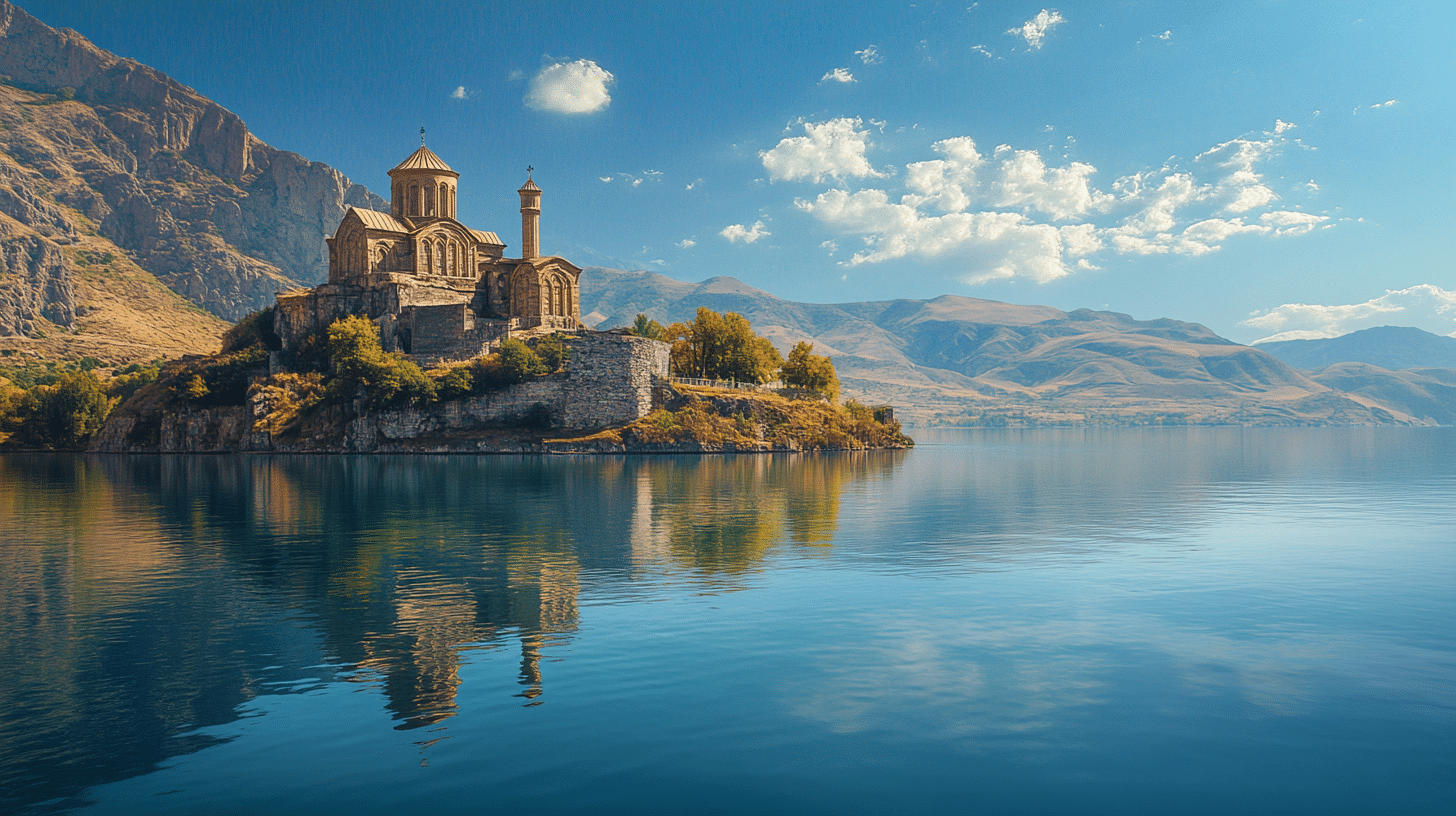
History & Importance: The largest lake in Turkey, with the Armenian Akdamar Church on an island. The area is known for cat cats with different-colored eyes and swimming abilities.
Best Time to Visit: June-September when Eastern Turkey has pleasant weather.
Guided Tours: Boat tours to Akdamar Island. Some tours include Van Castle and nearby historical sites.
Entry Fees and Hours: Akdamar Island boat fee- 50 TL plus entrance ticket- 100 TL. Open 8 am-7 pm in summer.
19. Myra Ruins- Demre
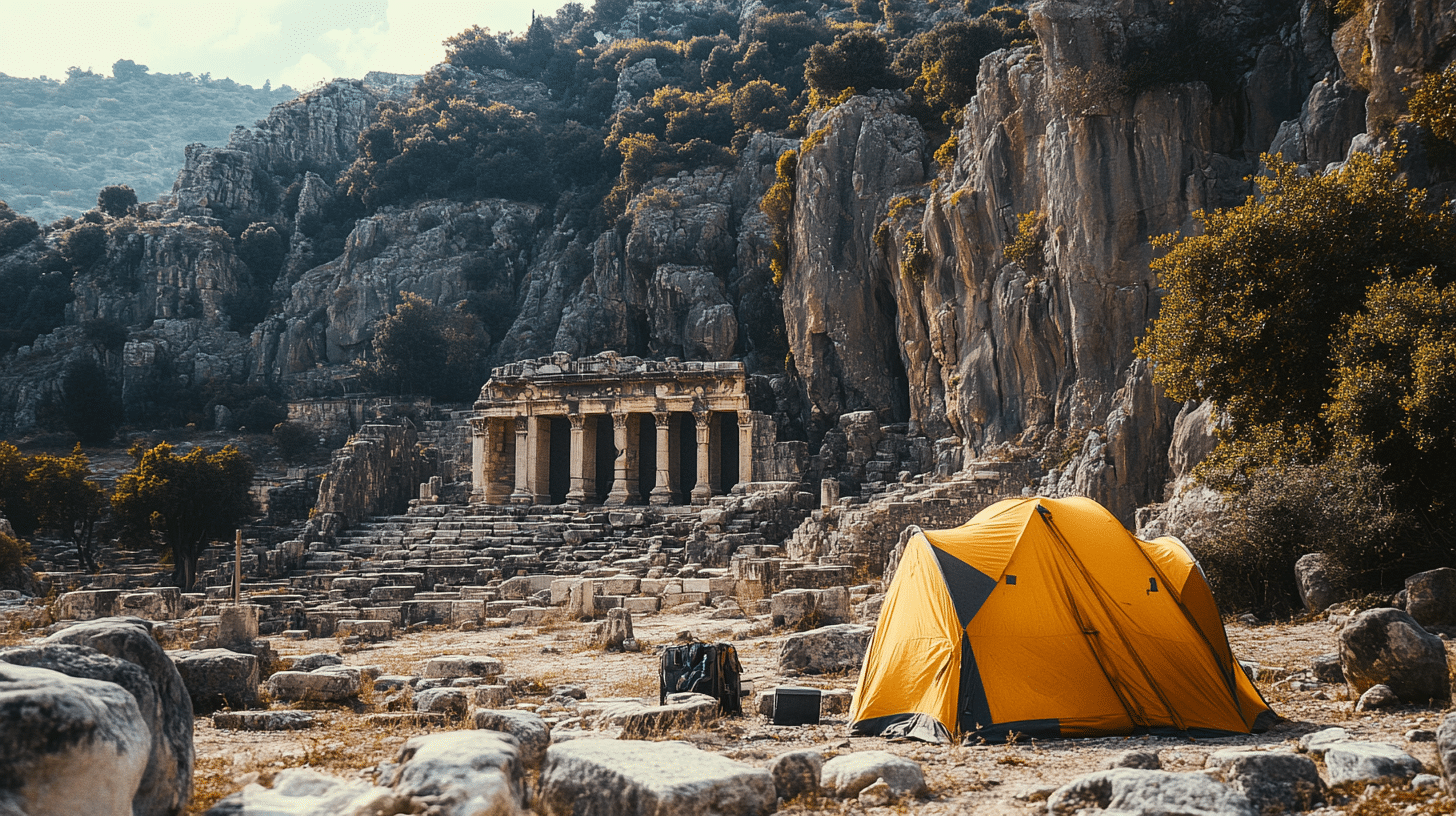
History & Importance: This was an Ancient Lycian city with rock-cut tombs and a large Roman theater. In the 4th century, St. Nicholas (Santa Claus) was bishop here.
Best Time to Visit: April-May and October for mild temperatures.
Guided Tours: Combined tours of ruins and St. Nicholas Church explain both pagan and Christian history.
Entry Fees and Hours: 70 TL. Open 8-30 am-7 pm (summer), 8-30 am-5 pm (winter).
20. Grand Bazaar- Istanbul

History & Importance: This is one of the world’s oldest markets, operating since 1461. Over 4,000 shops sell traditional Turkish crafts, from carpets to jewelry.
Best Time to Visit: Weekday mornings to avoid crowds. Avoid Sundays as some shops close.
Guided Tours: Shopping tours help with haggling and finding quality goods. Food tours sample Turkish treats.
Entry Fees and Hours: Free entry. Open 8-30 am-7 pm, closed Sundays.
21. Manavgat Waterfalls- Antalya
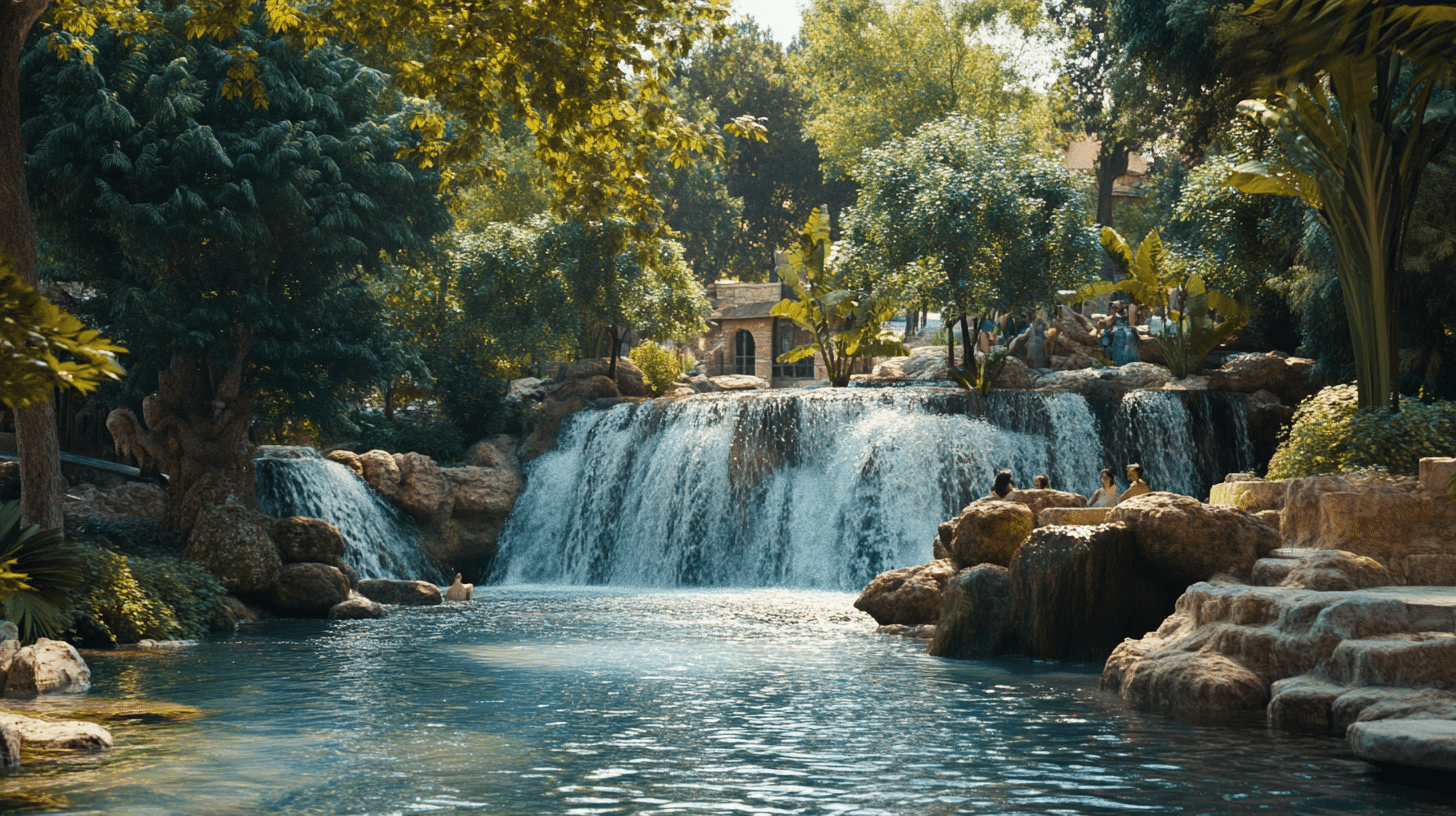
History & Importance: A series of small waterfalls where locals enjoy picnics and swimming. This natural beauty spot is near popular tourist areas.
Best Time to Visit: May-June and September when water flow is strong but crowds are lighter.
Guided Tours: River tours often include time at falls and beaches. Some tours combine with the ancient city of Side.
Entry Fees and Hours: 20 TL for adults and 10 TL for kids. Open 8 am-7 pm.
22. Mount Ararat- Iğdır
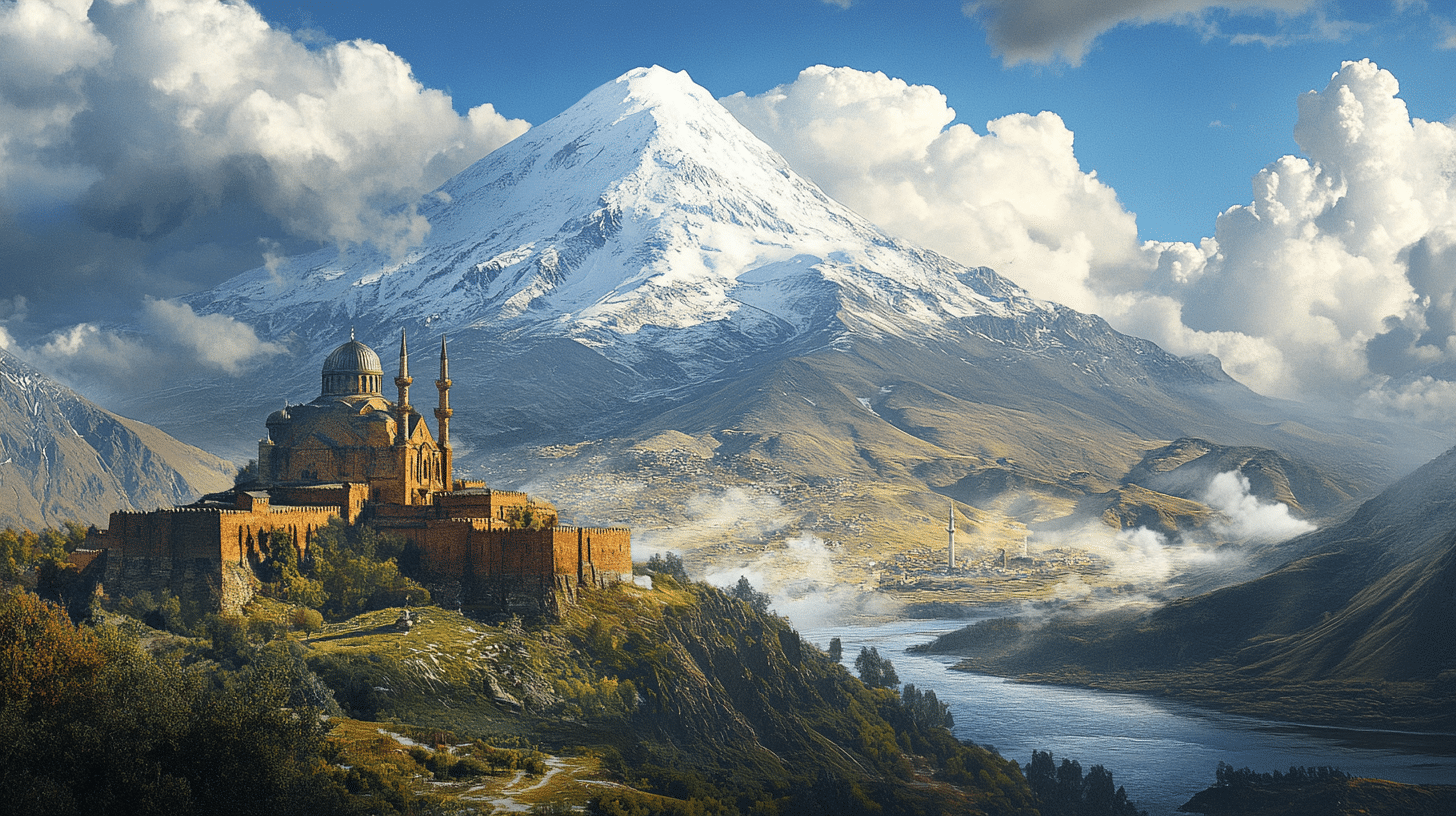
History & Importance: It is Turkey’s highest mountain (5,137m). Biblical tradition says Noah’s Ark landed here. The area has Kurdish and Armenian cultural influences.
Best Time to Visit: July-August for climbing. June-September for viewing from a distance.
Guided Tours: Climbing requires permits and authorized guides. During Eastern Turkey tours, most visitors see from a distance.
Entry Fees and Hours: Climbing permits are required. Apply weeks in advance through Turkish agencies.
23. Gallipoli Peninsula-Canakkale
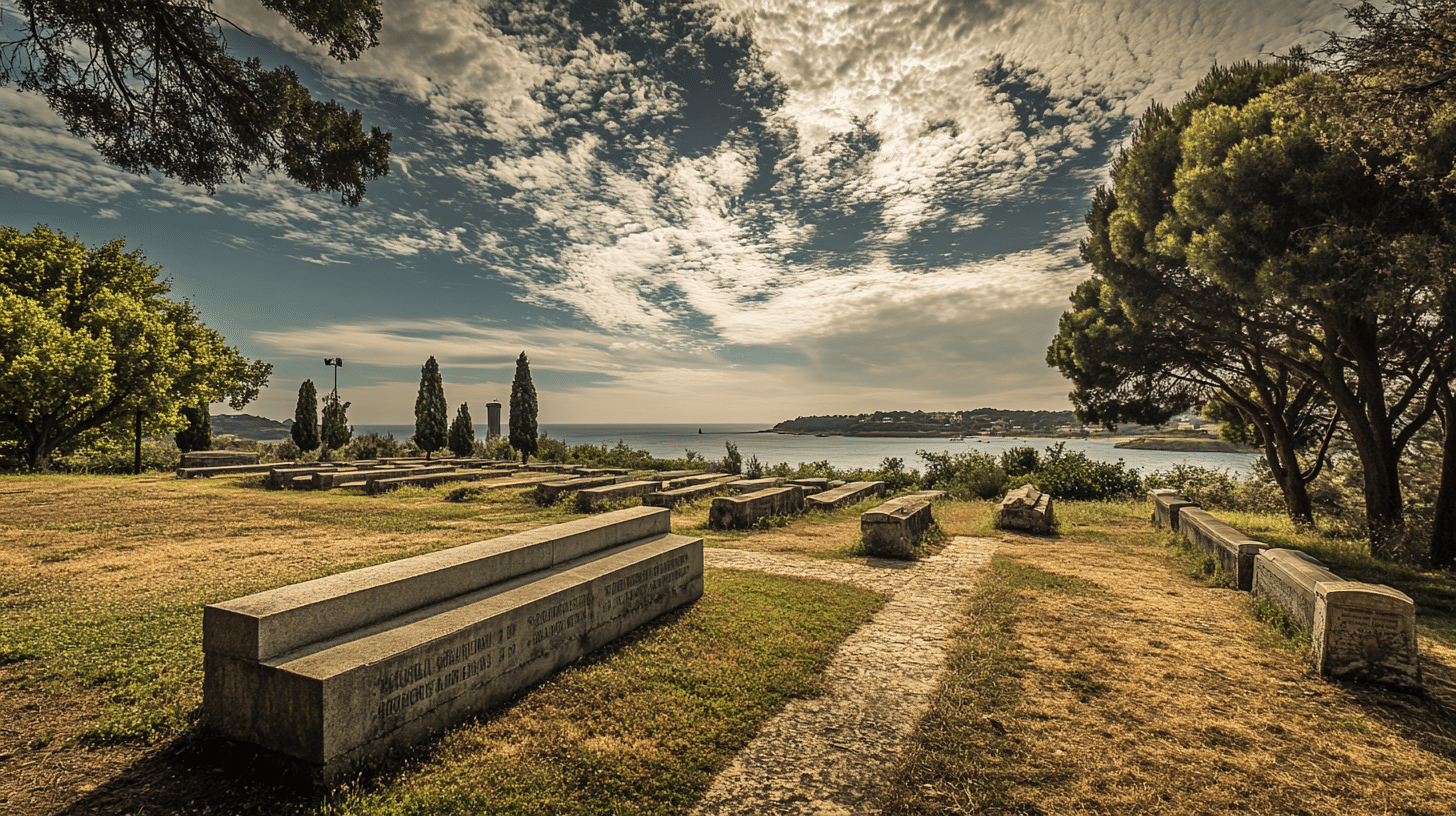
History & Importance: This was the site of a major WWI battle in which Ottoman forces defeated the Allied invasion. It is now a peace park with cemeteries and monuments from all sides.
Best Time to Visit: April 25 for ANZAC Day ceremonies, or spring and fall for mild weather.
Guided Tours: Battlefield tours explain military strategy and human stories from the campaign.
Entry Fees and Hours: Free. Memorial sites typically open 8-30 am-5 pm.
24. Celsus Library- Ephesus

History & Importance: Part of Ephesus, this Roman library held 12,000 scrolls. Its grand façade has been carefully restored to show ancient public architecture.
Best Time to Visit: April, May, October. Early morning for photos without crowds.
Guided Tours: Included in Ephesus Tours. Some tours time visits for the best photography light.
Entry Fees and Hours: Included in Ephesus ticket (900 TL).
25. Basilica Cistern- Istanbul

History & Importance: In 532 CE, Emperor Justinian built an underground water storage system. A forest of 336 marble columns creates atmospheric space beneath Istanbul.
The Best Time to Visit: is any time of year (it’s underground, so the weather doesn’t matter). Visit in the morning to avoid lines.
Guided Tours: Combined tours with other Byzantine sites explain water system engineering.
Entry Fees and Hours: Around 900 TL. Open 9 am-7 pm.
26. Hattusha (Hattusa)- Corum
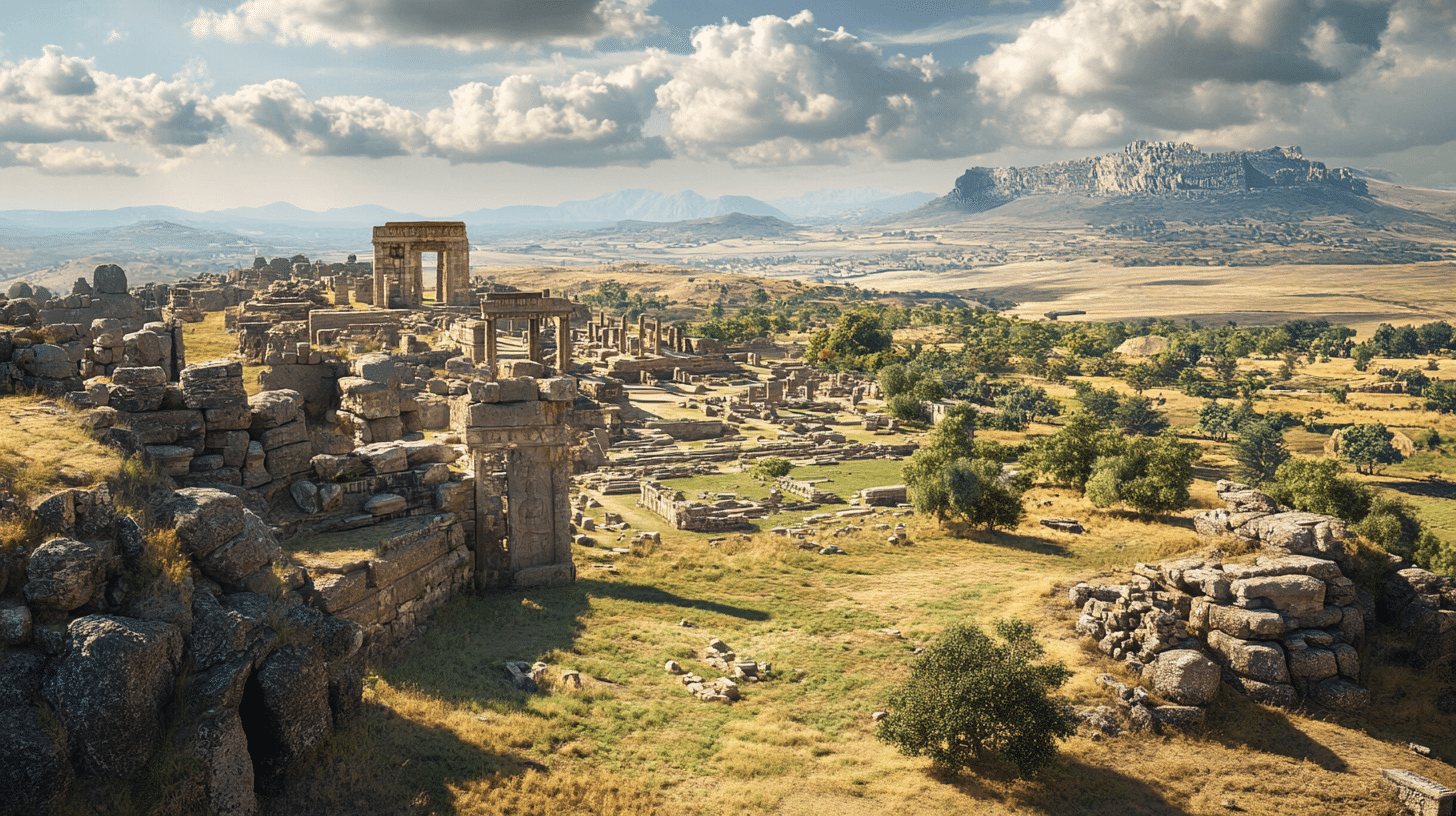
History & Importance: The capital of the ancient Hittite Empire, it had massive walls, temples, and cuneiform archives. It also shows early urban planning from the Bronze Age.
Best Time to Visit: May-June and September for comfortable temperatures.
Guided Tours: Archaeological tours explain Hittite culture and empire building.
Entry Fees and Hours: 150 TL. Open 8 am-7 pm (summer), 8-30 am-5 pm (winter).
27. The Temple of Artemis- Ephesus
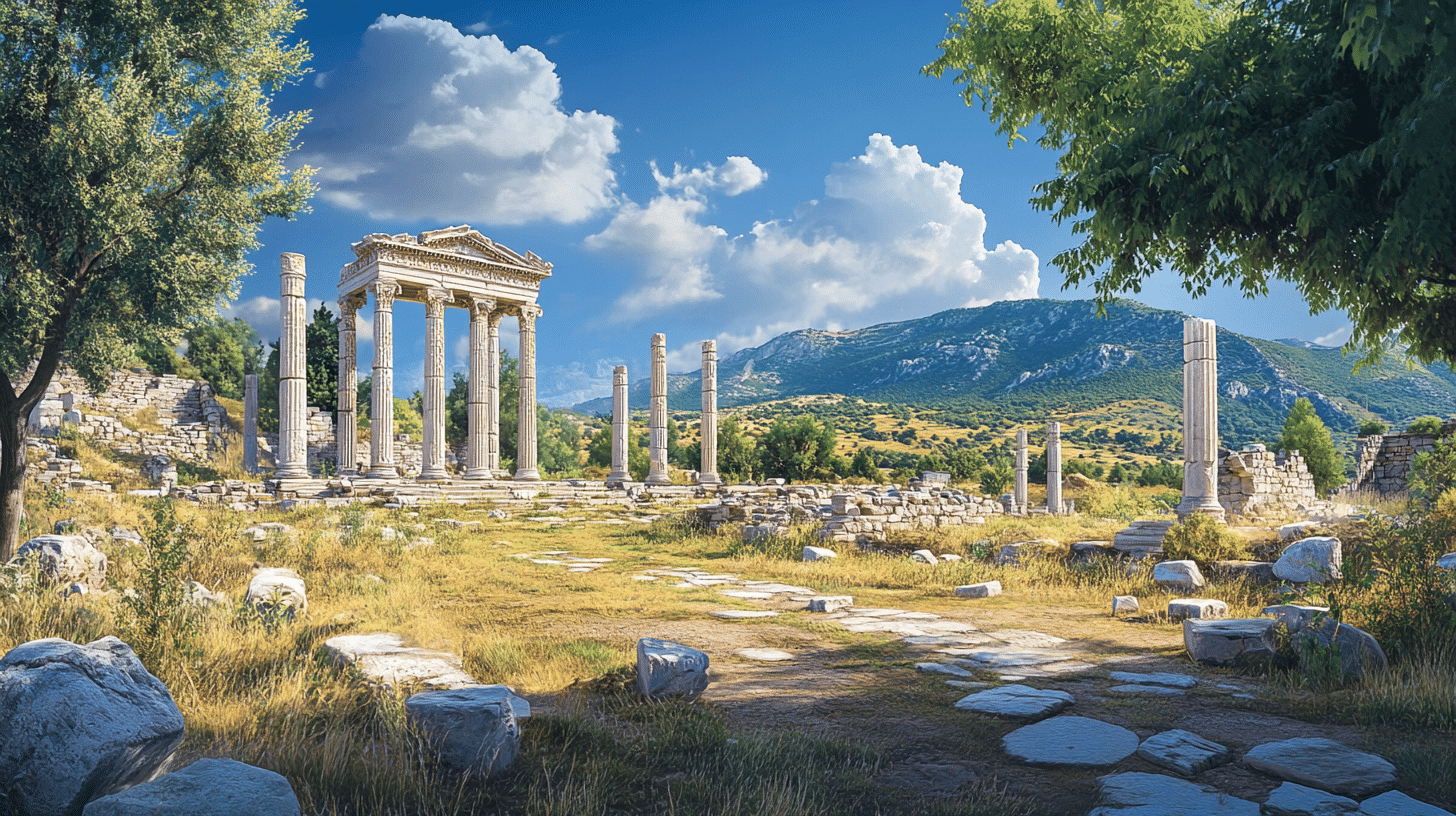
History &Importance: One of the Seven Wonders of the Ancient World. Only foundations and single columns remain of the massive temple that once dominated the Ephesus area.
Best Time to Visit: Same as Ephesus (April-May and October).
Guided Tours: Some Ephesus tours include the temple site, but many skip it. Specific Seven Wonders tours include good historical context.
Entry Fees and Hours: Free. Open all day, not regulated.
28. Cappadocia’s Fairy Chimneys- Nevsehir
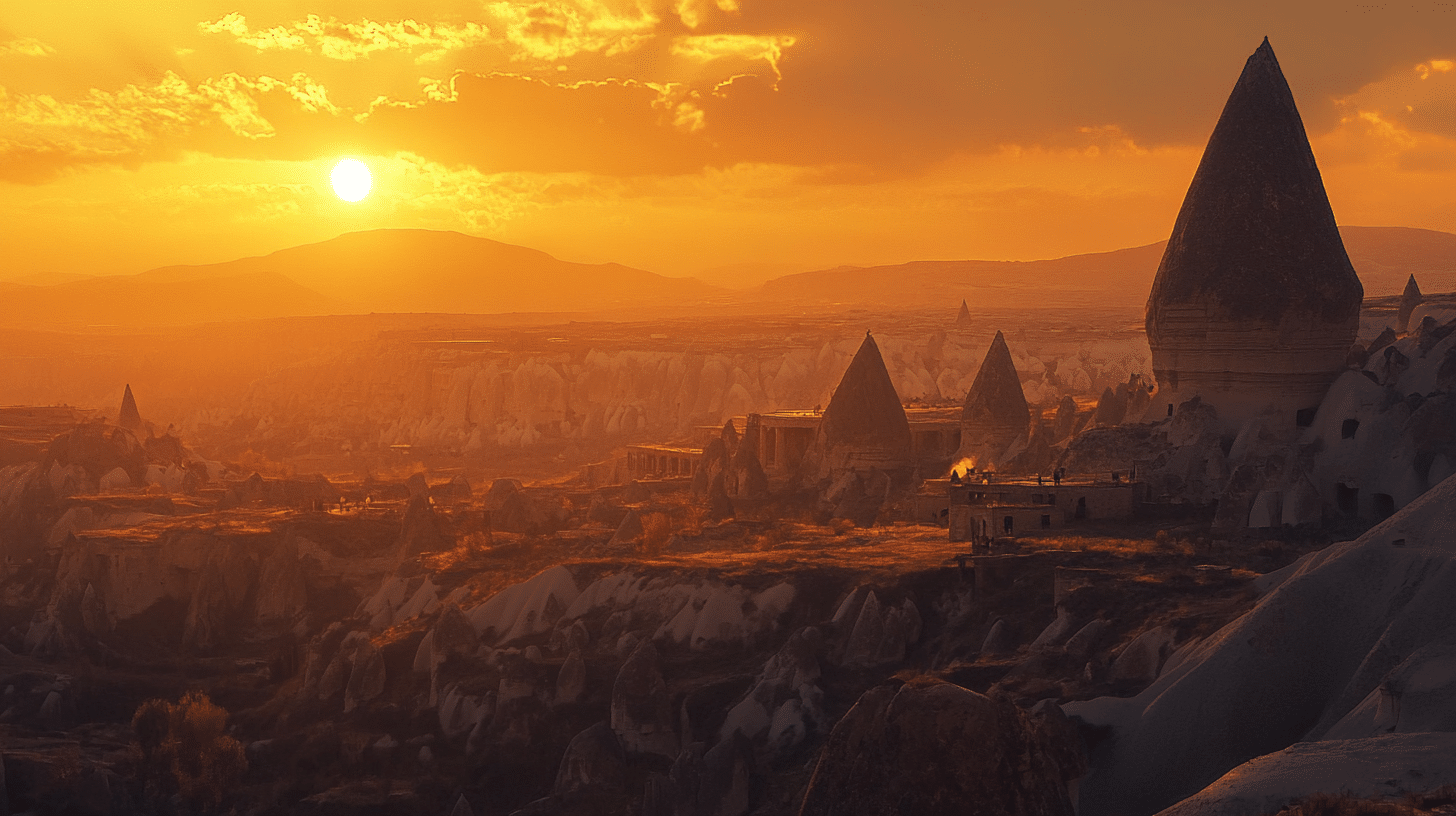
History & Importance: These unusual rock formations were created by volcanic ash erosion. Their cone shapes with rock “caps” look like tiny homes for magical beings.
Best Time to Visit: Same as general Cappadocia entry.
Guided Tours: Hiking tours get close to formations. Green Tour includes the best chimney sites.
Entry Fees and Hours: Some areas are free, others 50-100 TL. They are generally open from dawn to dusk.
29. Chora Church (Kariye Museum)- Istanbul
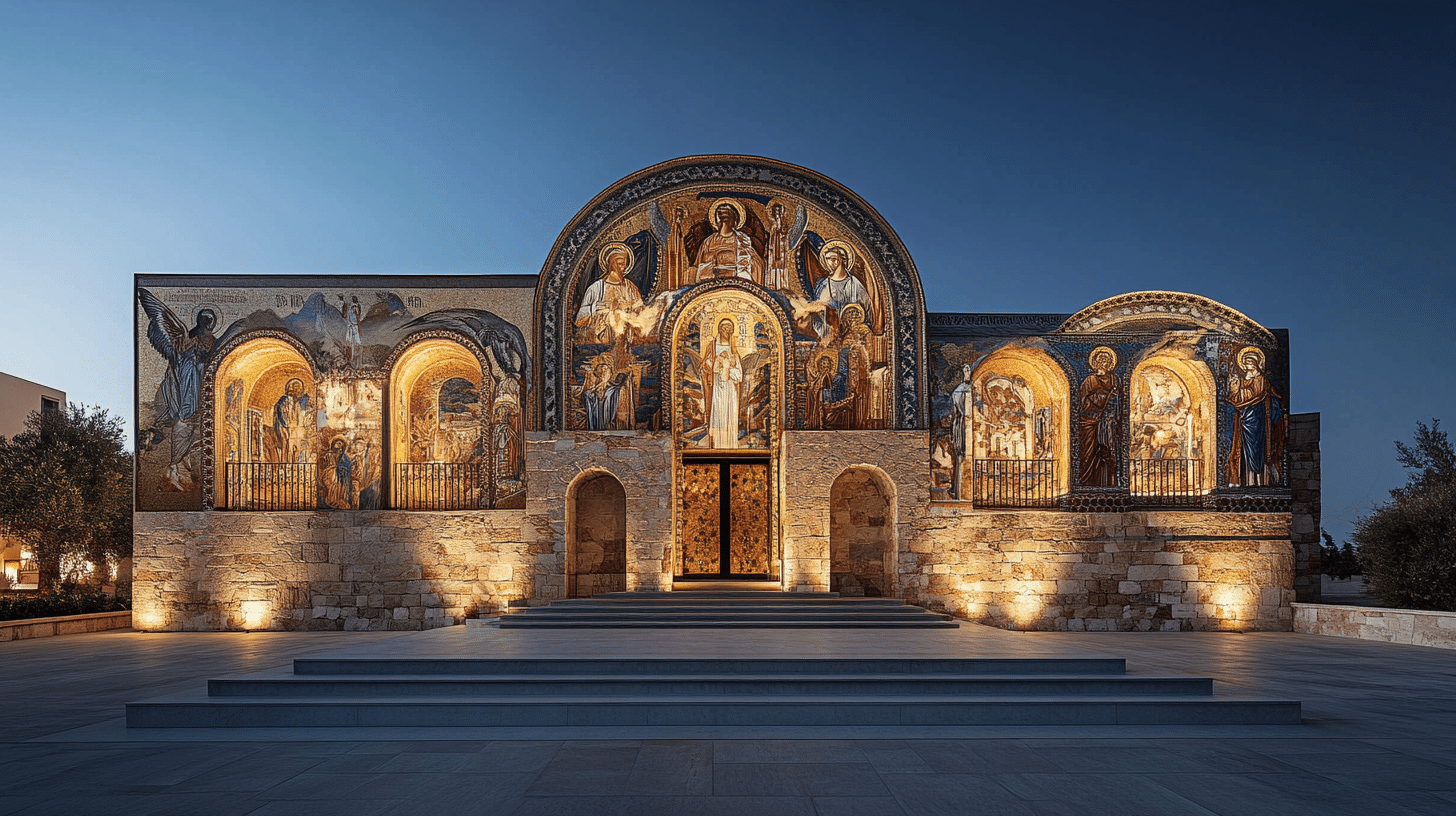
History & Importance: This Byzantine church has some of the world’s finest mosaics and frescoes from the 14th century. It shows the high point of Byzantine art before the Ottoman conquest.
Best Time to Visit: Any time. Interior lighting is consistent year-round.
Guided Tours: Art history tours explain complex religious imagery and techniques.
Entry Fees and Hours: €20 for foreigners. Opens from 9 AM to 6 PM
30. Galata Tower- Istanbul
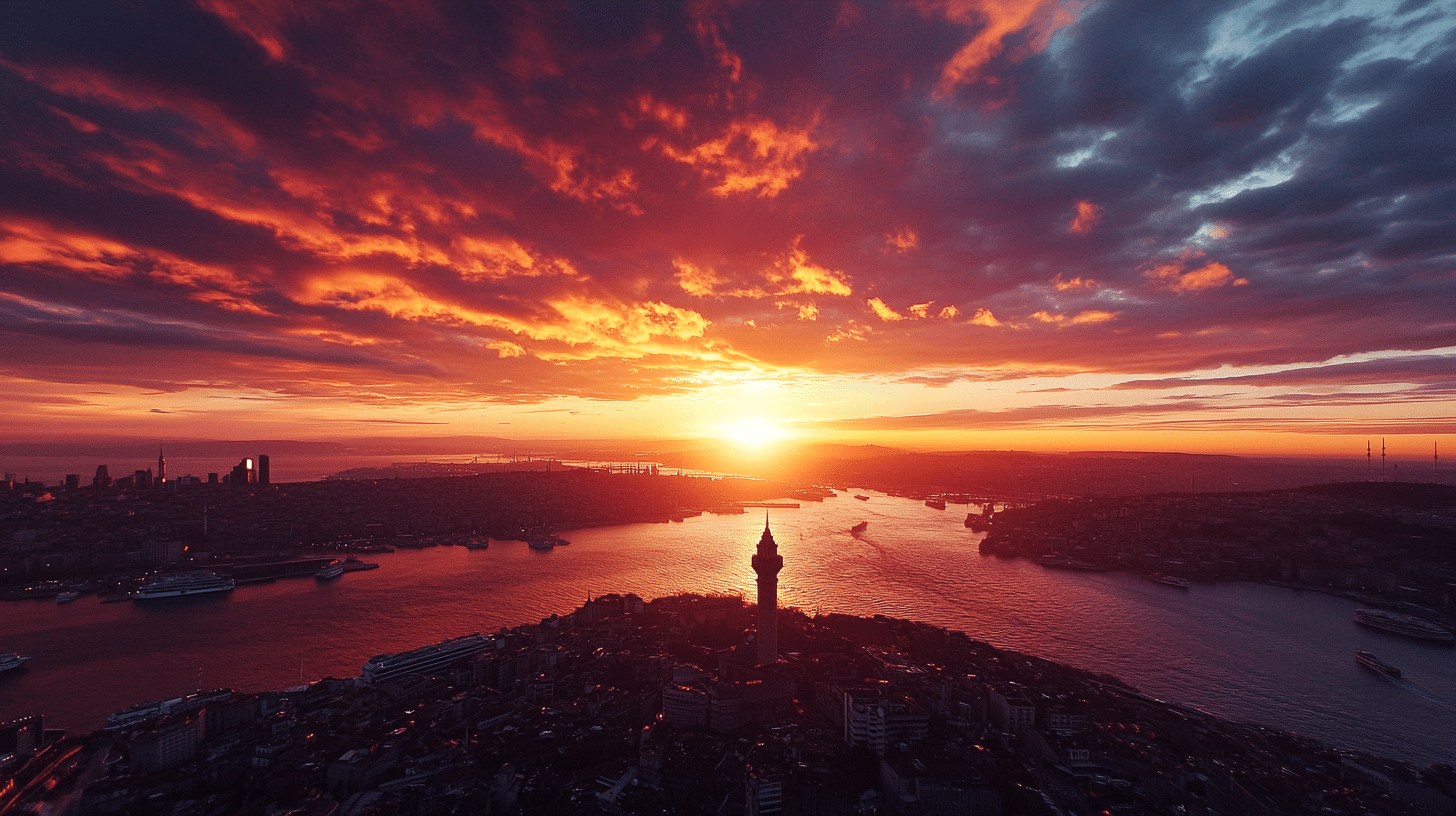
History & Importance: Built in 1348 by Genoese colonists as a watchtower. At 67 meters tall, it was Istanbul’s tallest structure for centuries. Used for fire spotting and astronomy. Now offers panoramic views of Istanbul, the Golden Horn, and the Bosphorus.
Best Time to Visit: Weekday mornings, avoid lines. April-May and September-October have clear visibility without summer heat.
Guided Tours: There are no official tower tours, but many Istanbul walking tours include them. Some focus on Genoese history or the Beyoğlu district.
Entry Fees and Hours: 400 TL for foreign visitors. Open daily 8-30 am-11 pm, last entry 10-30 pm.
31. Bergama Acropolis- Izmir
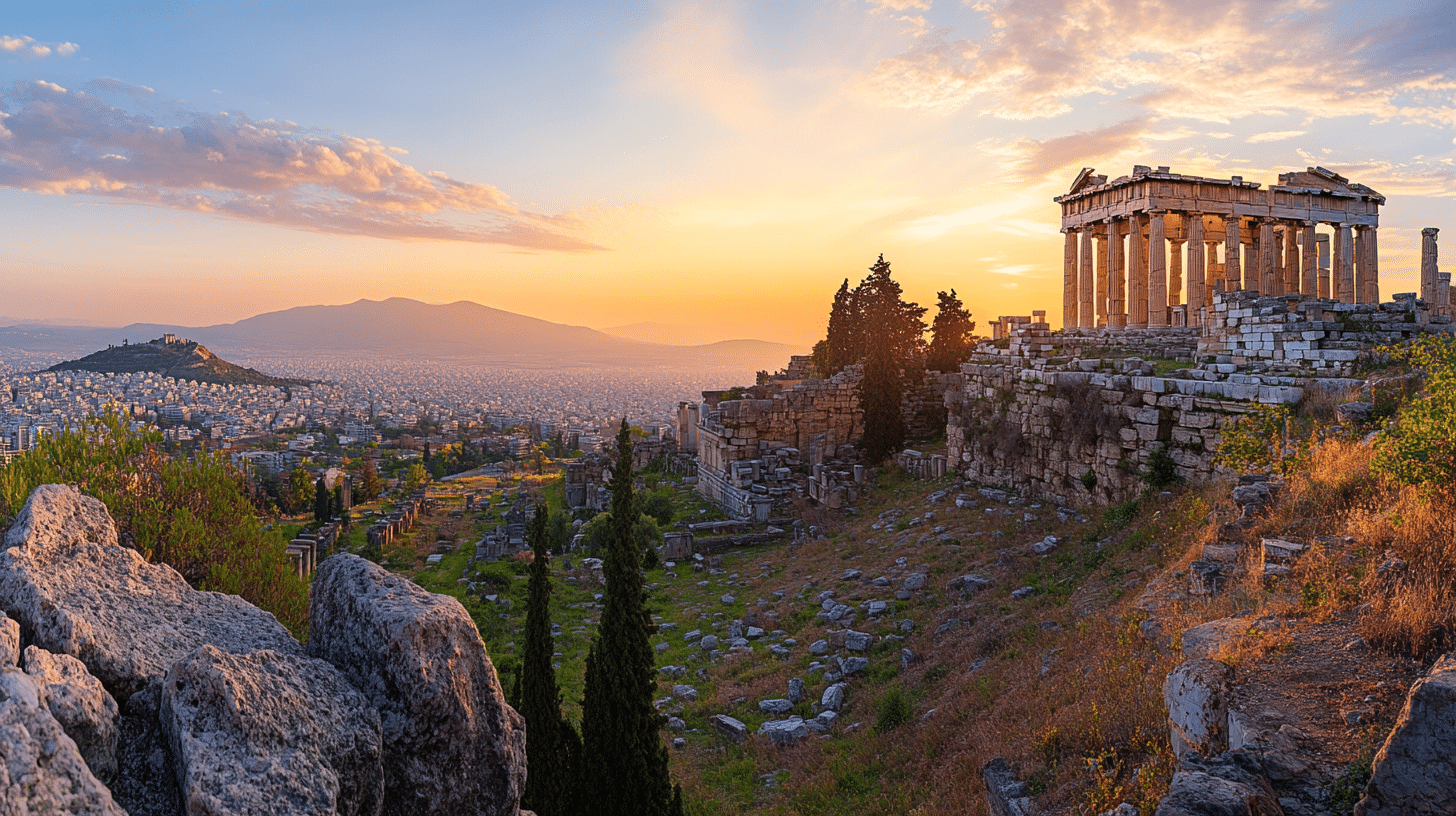
History & Importance: This ancient Greek hilltop city has a steep theater built into a 38-degree slope. It is home to a major library and the Temple of Trajan. The city is also the birthplace of parchment and a major medical center. It shows Hellenistic culture at its peak.
Best Time to Visit: April-May and September-October for mild weather. Morning visits offer better light and cooler temperatures on the exposed hill.
Guided Tours: Site guides are available at the entrance. Combined tours with Asklepion (an ancient hospital) and Red Basilica provide a fuller historical context.
Entry Fees and Hours: 200 TL entry. The cable car is 60 TL each way. It is open 8-30 am-7 pm in the summer and 8-30 am-5 pm in the winter.
Summary
Turkish landmarks tell the story of civilizations that have called this crossroads home for millennia.
Each site offers a window into different periods—from ancient Hittites to Romans, Byzantines to Ottomans—all of which left their mark on this fascinating land.
With careful planning using the practical details we’ve provided, you can experience these treasures with ease.
The best times to visit most sites are spring and fall when the weather is mild and crowds are smaller.
We hope this guide helps you explore Turkey’s incredible heritage and create lasting memories. Visit our website for more such blogs.
Frequently Asked Questions
What is the Most Famous Landmark of Turkey?
Istanbul is home to popular landmarks like Hagia Sophia, Blue Mosque(the most famous landmark), Topkapi Palace, Galata Tower, and Dolmabahce Palace.
What is Turkey Famous for?
Turkey is famous for its cultural heritage, historical sites like Troy and Hagia Sophia, and natural wonders like Pamukkale.

